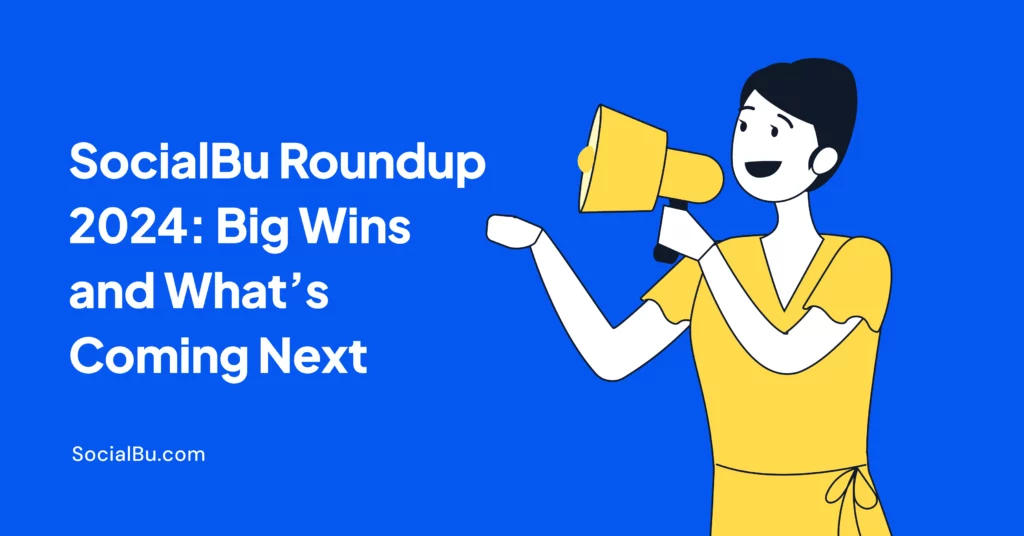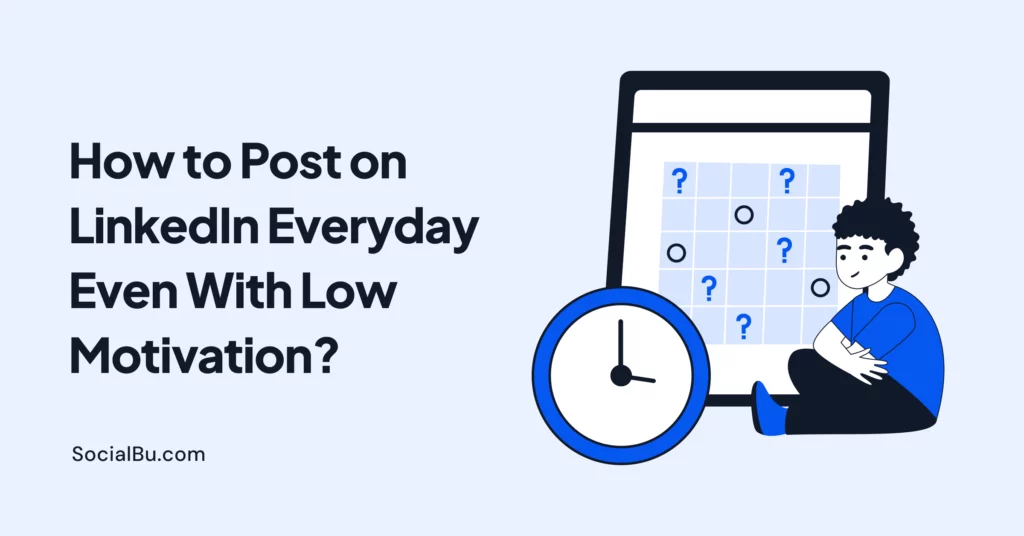Influencer marketing is evolving fast and is expected to be worth over $22.2 billion by 2025, crazy, right? This huge growth shows that big follower counts and appealing posts will no longer be the only things that would matter. It all will come down to real connections, smart tactics, and tangible outcomes. Brands that adapt will prosper as rules change.
New trends in AI-based personalization, social media influencer marketing, and the increasing need for honest and relatable influencer content drive these changes in 2025.
Regional influencers will even become more popular on platforms like Instagram and TikTok. This means that using the right influencer strategy is key to any successful campaign.
This blog post will walk you through some of the must-know strategies that you should consider to create an effective influencer marketing plan. One that will truly connect with your audience, help you achieve goals, and keep you ahead of these ever-changing consumer trends.
Types of Influencers
Understanding the types of influencer marketing experts is crucial to designing an appropriate and effective strategy.
Let’s take a closer look at the popular influencer marketing types:
1. Macro-Influencers
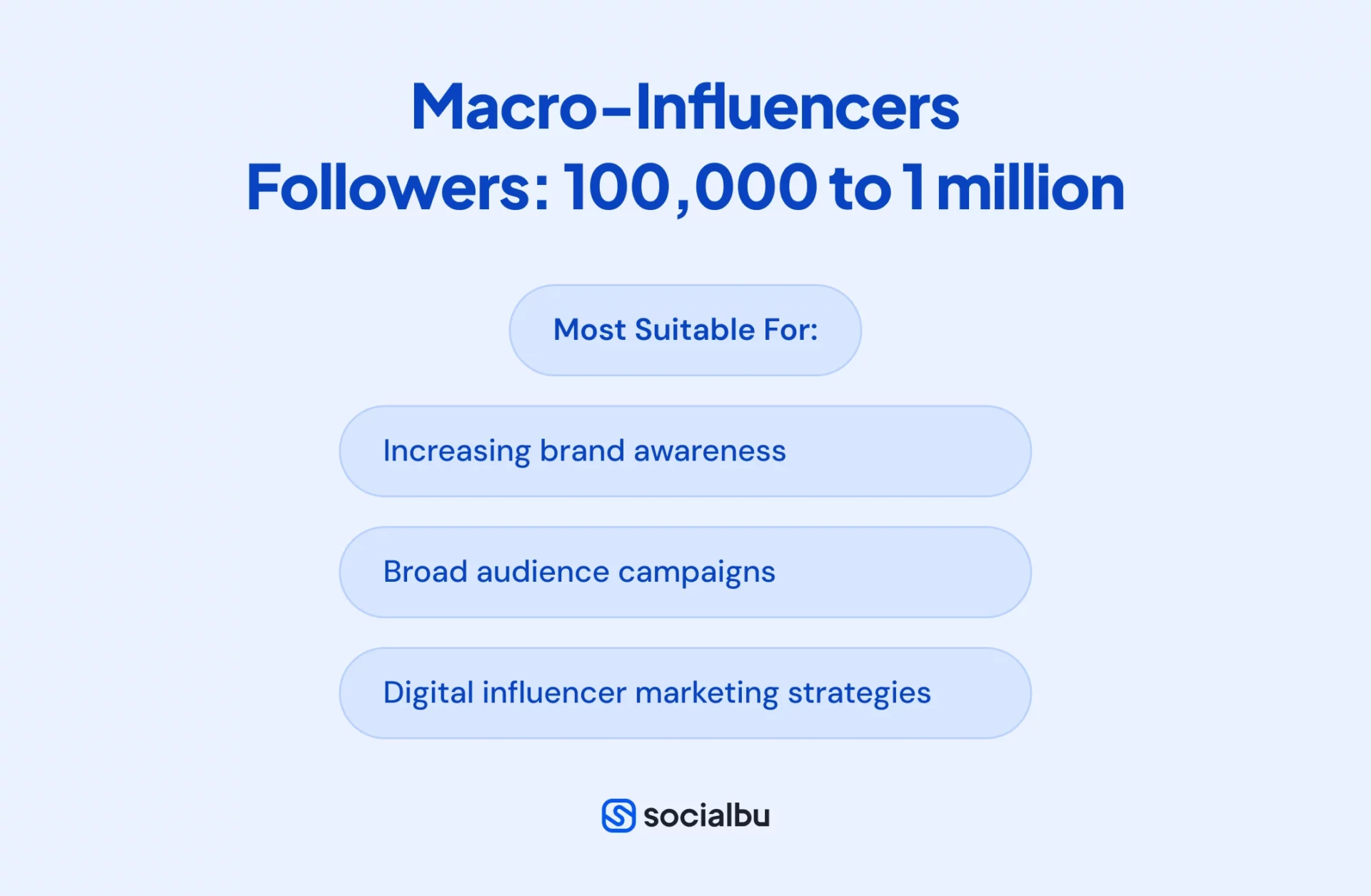
Macro-influencers–who are they?
Influencers with a following of 100,000 to 1 million. Their immense reach is quite ideal for campaigns with a focus on brand awareness.
For example, if you are launching a new product, collaborating with a macro-influencer will amplify your message to a much larger audience. However, their engagement rate will be lower than smaller-scale influencers, even if they reach more people. The effectiveness of macro-influencers is good for global campaigns or digital influencer marketing.
2. Micro-Influencers
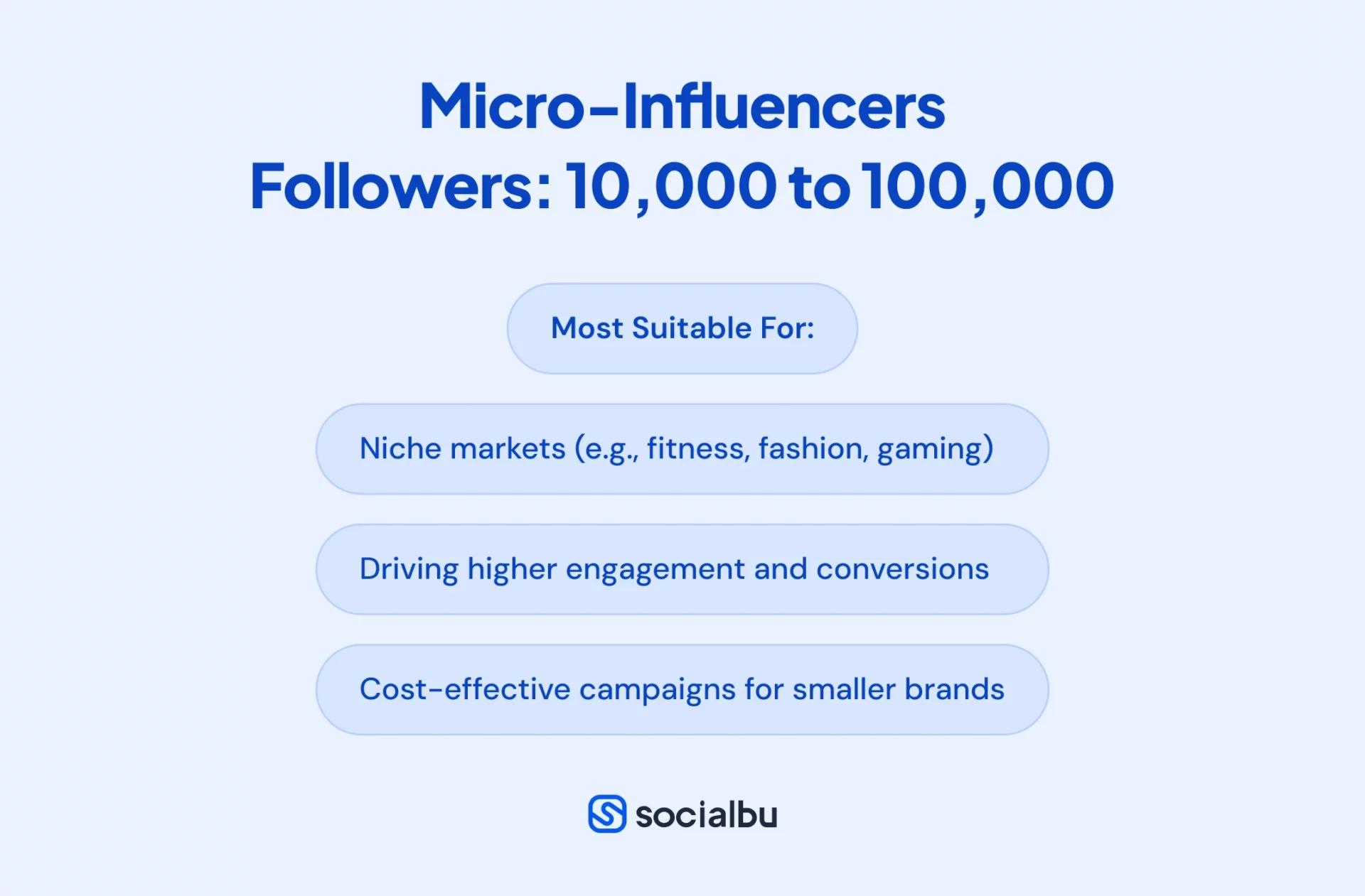
Micro-influencers have followers between 10,000 and 100,000. This category connects more strongly with audiences in very specific or specialized niches. Their audience trusts their recommendations, so they are more like experts in specific niches such as fitness, fashion, or gaming.
Partnering with micro-influencers may potentially improve engagement and conversions and be more budget-friendly for smaller brands. Therefore, they are the best choice a brand can have for social media marketing influencers.
3. Nano-Influencers
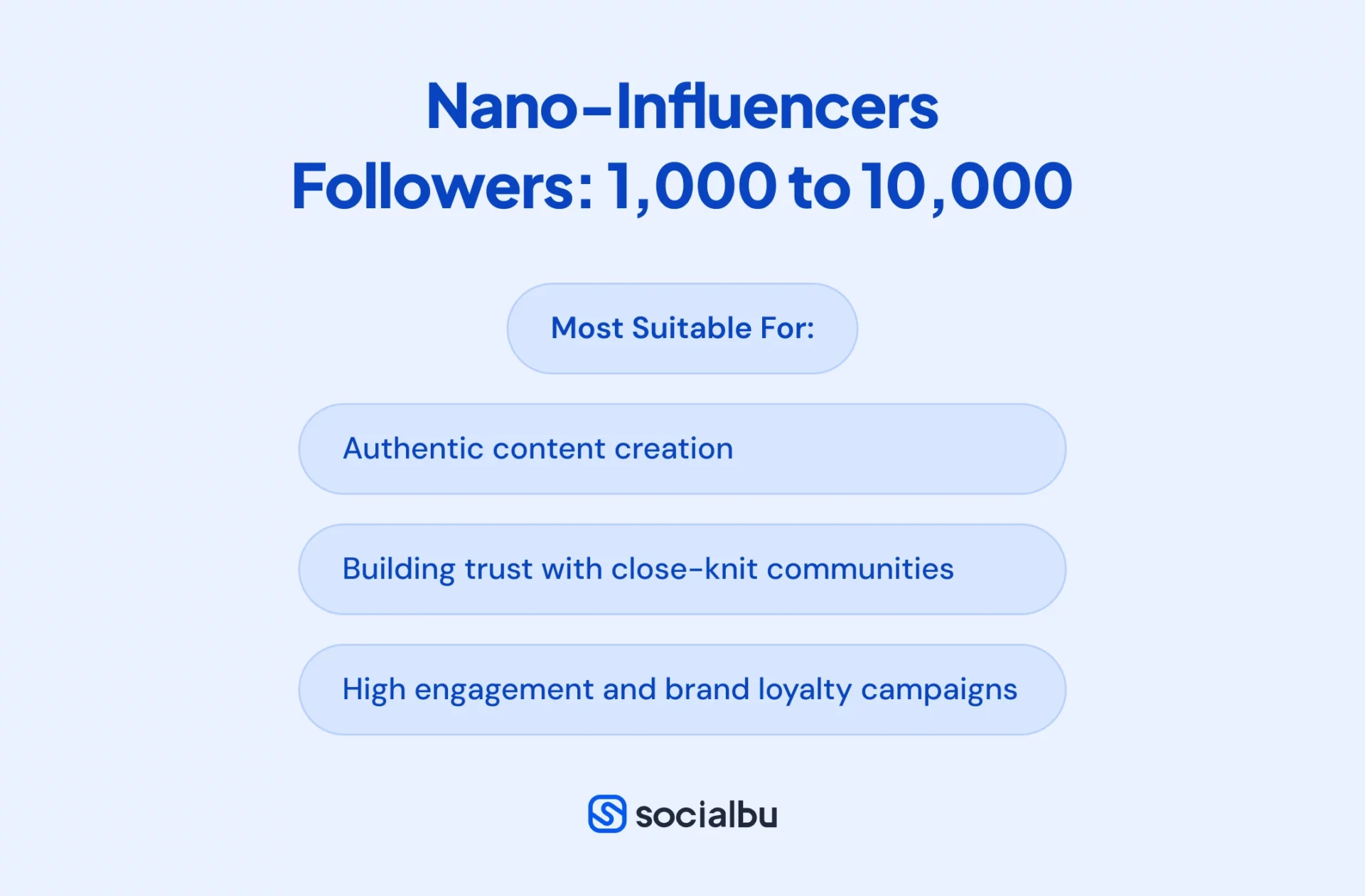
Nano-influencers have a fan following between 1,000 and 10,000 followers and create authentic content that really resonates with their very specific audience communities. Due to their relatability and accessibility, they are perfectly positioned to gain the trust of many people.
Although nano-influencers’ reach is smaller, their campaigns usually see much higher engagement and stronger brand loyalty. They also create high-quality influencer content.
4. Mega-Influencers
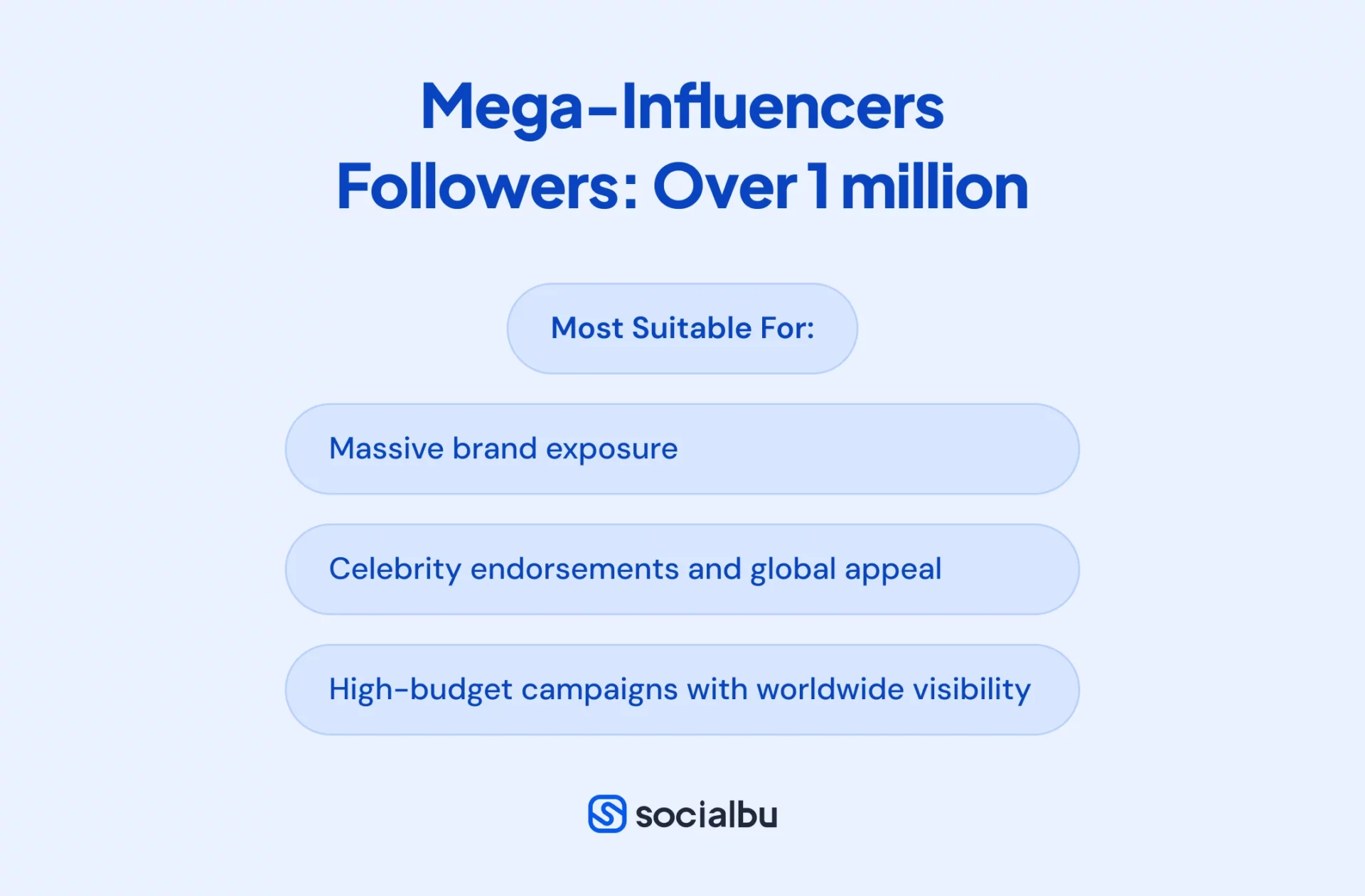
Mega-influencers, including celebrities and famous social media personalities, have over a million followers. They help brands reach a large audience.
Although costly, their campaigns are suitable for companies with high advertising budgets aiming to achieve worldwide visibility. This approach works well for high-budget social media influencer marketing strategies.
5. Niche Influencers
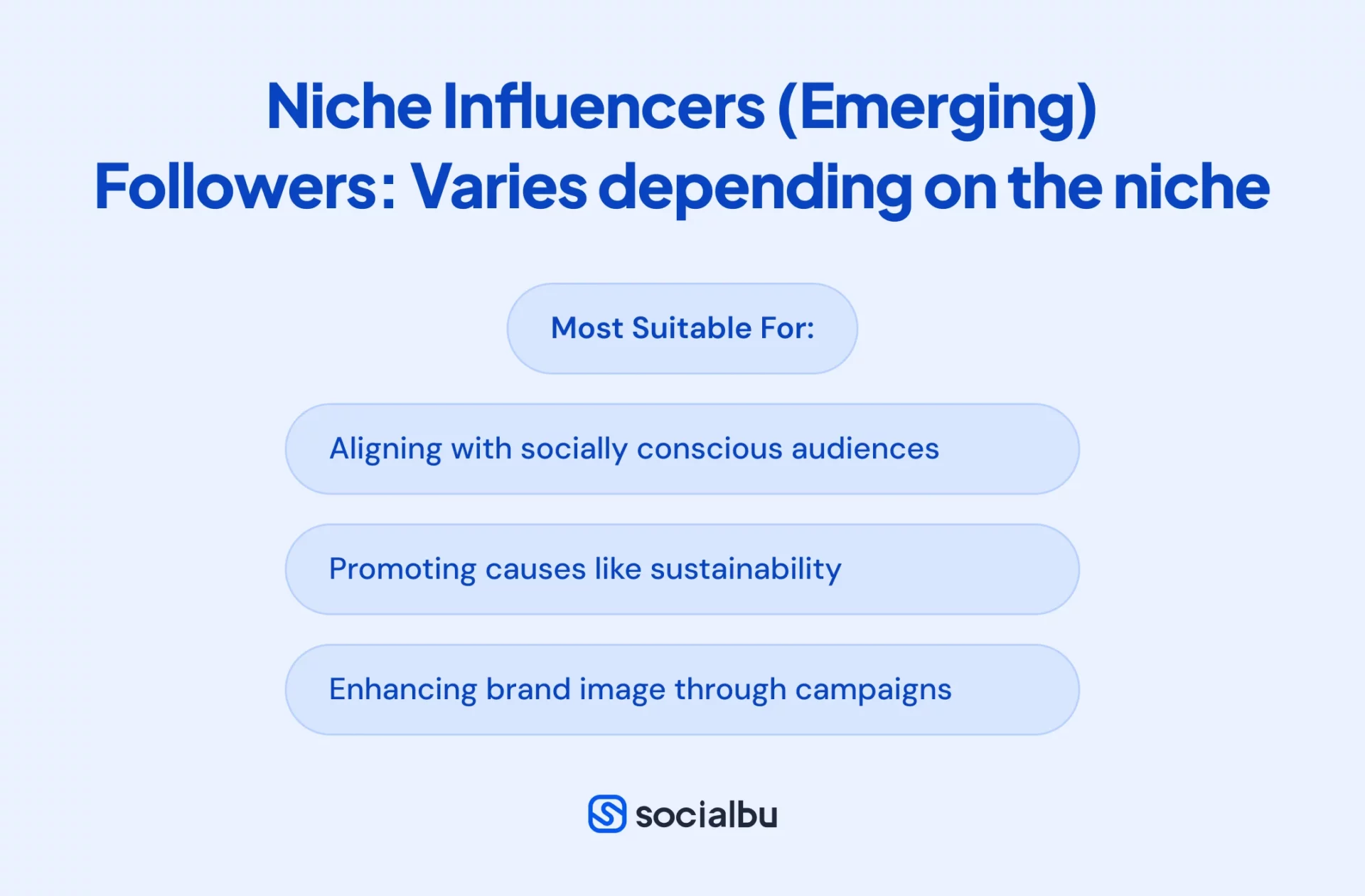
Today’s consumers appreciate those influencers who resonate with their interests and beliefs. Niche influencers, such as advocates for sustainability or educators in mental health, are trending these days.
Partnering with such influencers helps brands align with socially conscious audiences and prove their involvement in such causes, which is a bonus for their influencer marketing best practices.
6. Cross-Platform Influencers
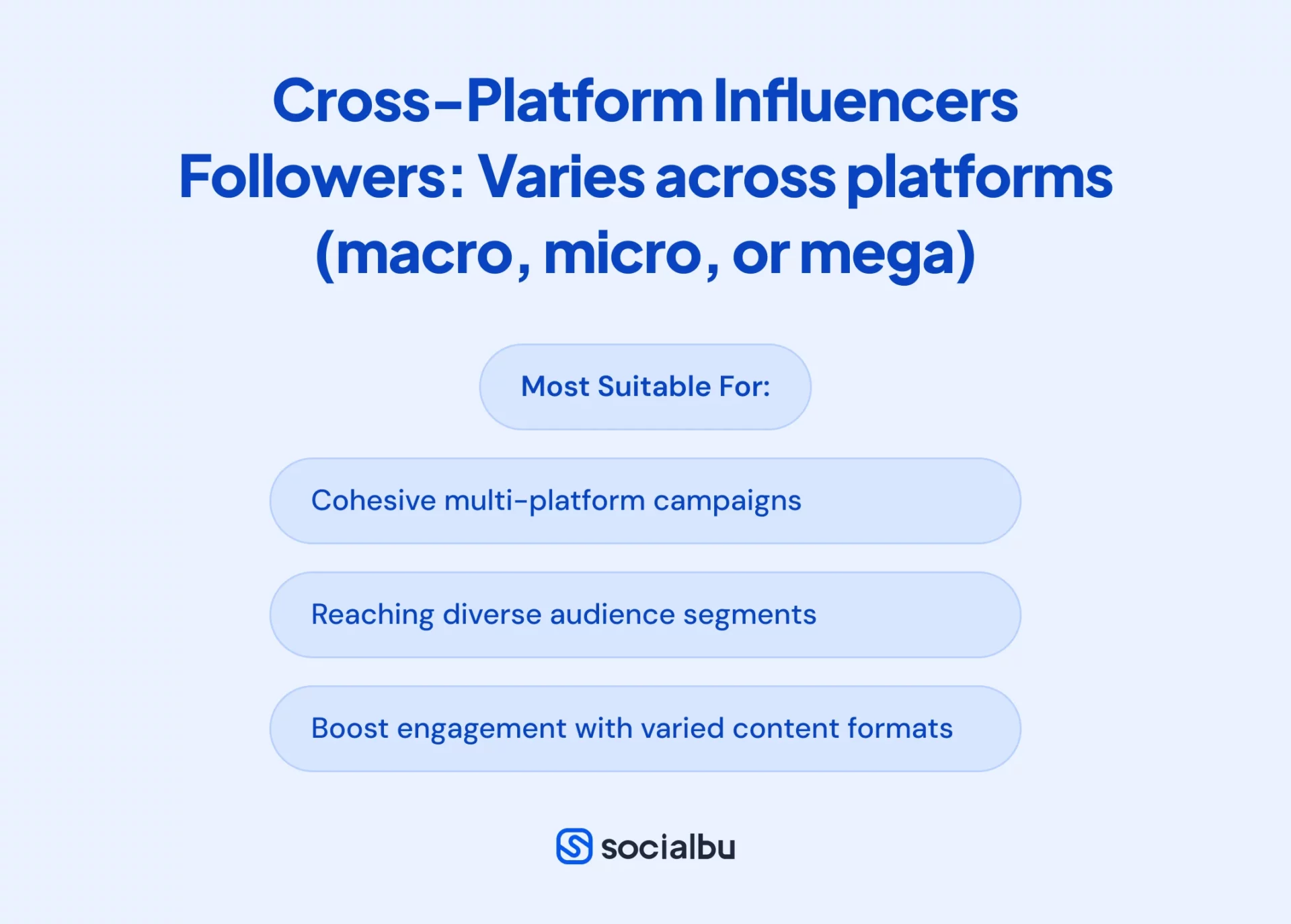
When it comes to cross-platform, these individuals now use several platforms simultaneously to become Instagram, YouTube, or TikTok influencers, depending on their niche of interest. Going multi-platform also enables a brand to create cohesive campaigns while reaching various audience segments.
For example, an influencer can promote long-form content on YouTube while sharing short, engaging snippets on TikTok. Such a cross-platform approach gives your influencer marketing channels where influencers are sharing content a wider scope and enables better engagement.
Key Strategies for Success in 2025
With 2025, influencer marketing strategies will have to adjust according to dynamic audience preferences and rapid technological changes. This means brands have to be up to date for new content methods.
1. Set Goals for Influencer Campaigns
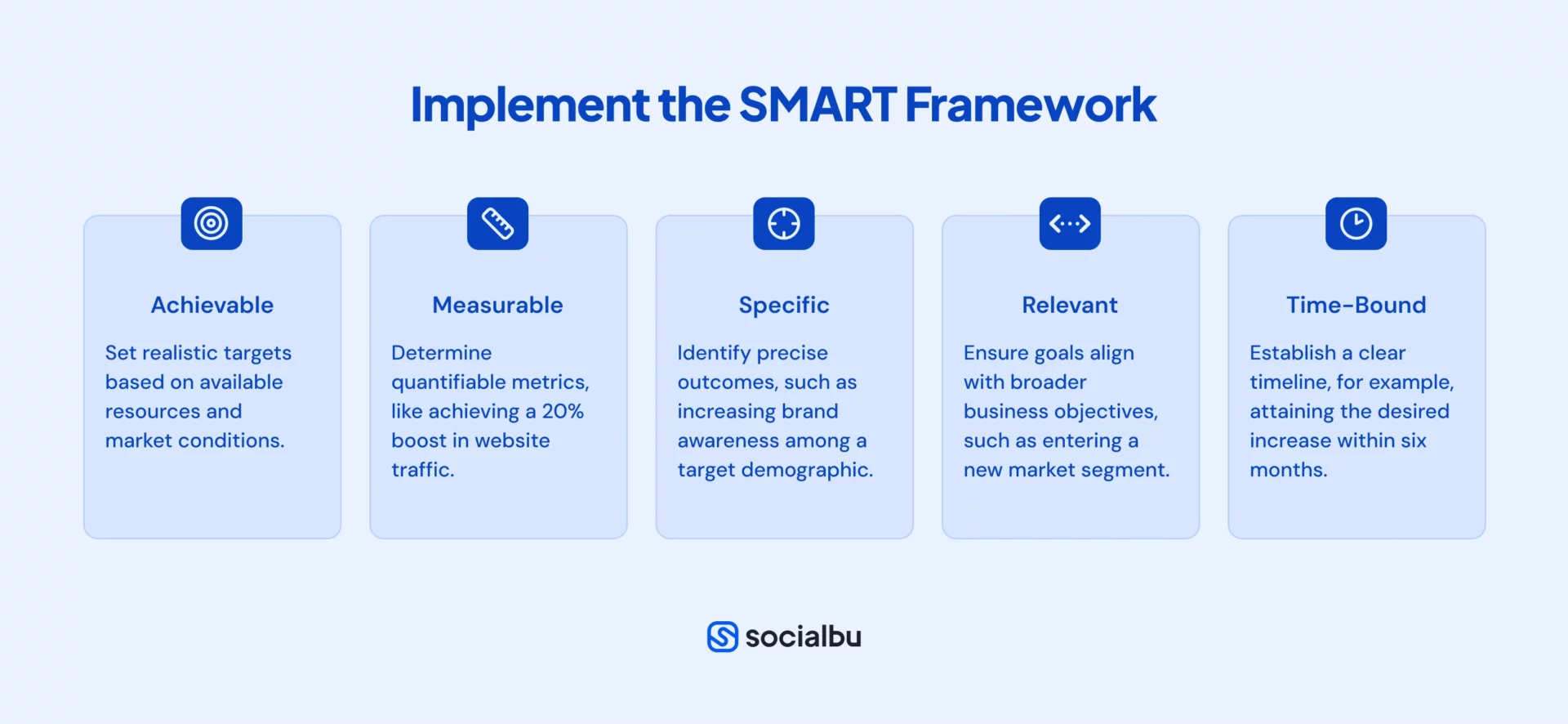
What is the first step in creating a social media influencer marketing strategy? Defining clear goals using the SMART framework.
A strong influencer marketing strategy starts with clear goals. The SMART framework ensures success by keeping them Specific, Measurable, Achievable, Relevant, and Time-bound.
Example:
- Specific: Clearly indicate the outcome of what should be accomplished, like increasing brand awareness among a particular target demographic.
- Measurable: Define quantifiable metrics, such as growing website traffic by 15%.
- Achievable: It is about setting targets that can be realistically achieved considering resources and the market.
- Relevant: Goals should be linked with broader business objectives, such as entering new market segments.
- Time-Bound: Specify time intervals, such as the desired increase should be achieved in six months.
By using a SMART approach, brands can formulate a focused and effective influencer marketing plan that drives tangible results.
2. Define Expectations
The success of any campaign requires transparent communication with the influencers. So, you need to outline clearly:
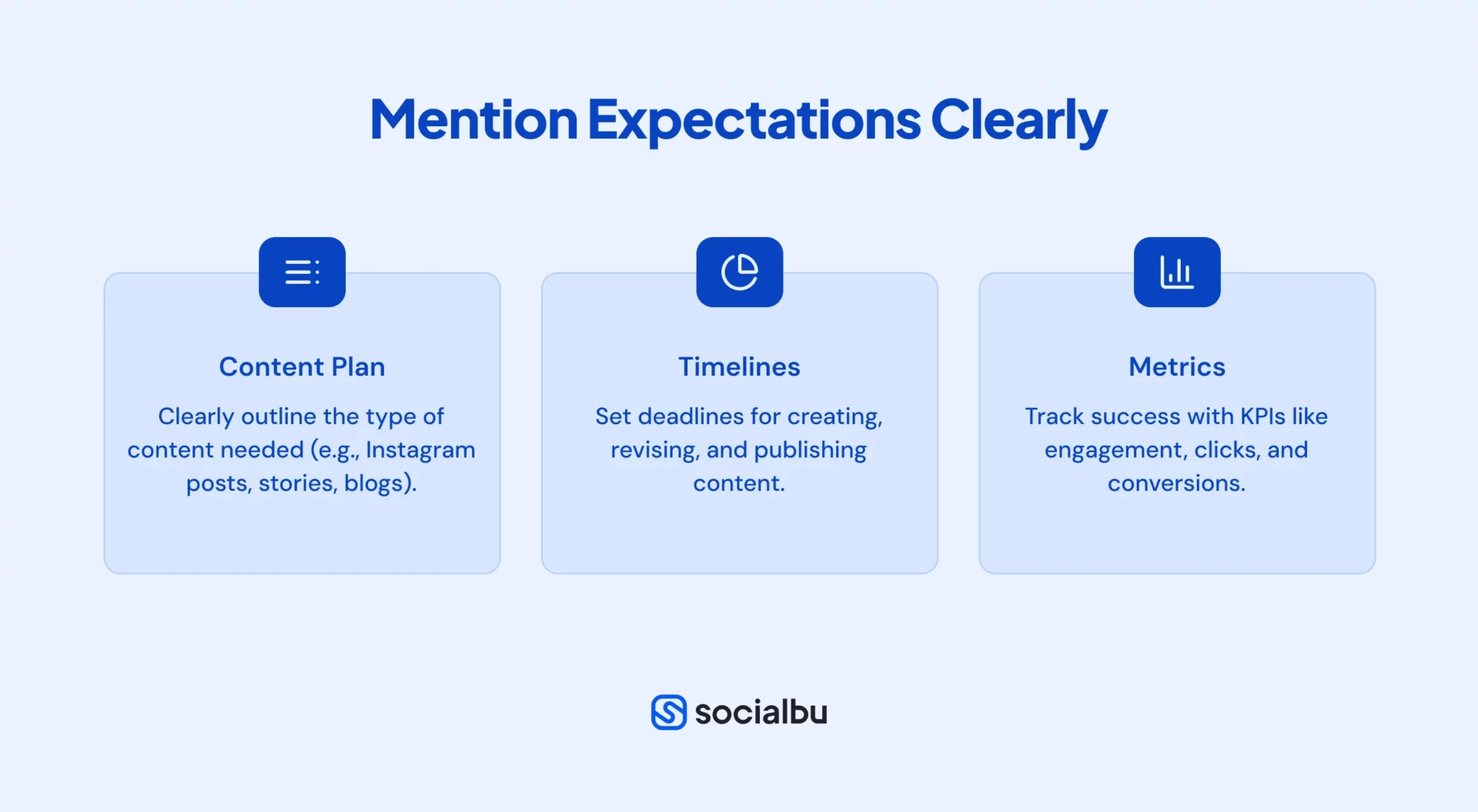
Deliverables
Specify the format and number of required pieces of content, such as Instagram posts, stories, or even blog articles.
Timelines
Establish a deadline for creation, revision, and publishing dates to keep the campaign moving at an even pace.
Performance Indicators
Establish the KPIs that need to be measured, such as engagement rates, click-through rates, and conversion rates, which will show whether or not you are successful.
These will help set parameters so that the brand and the influencer mutually understand expectations. This develops cooperation between the two parties, improving your influencer strategy.
The Rise of Video Content
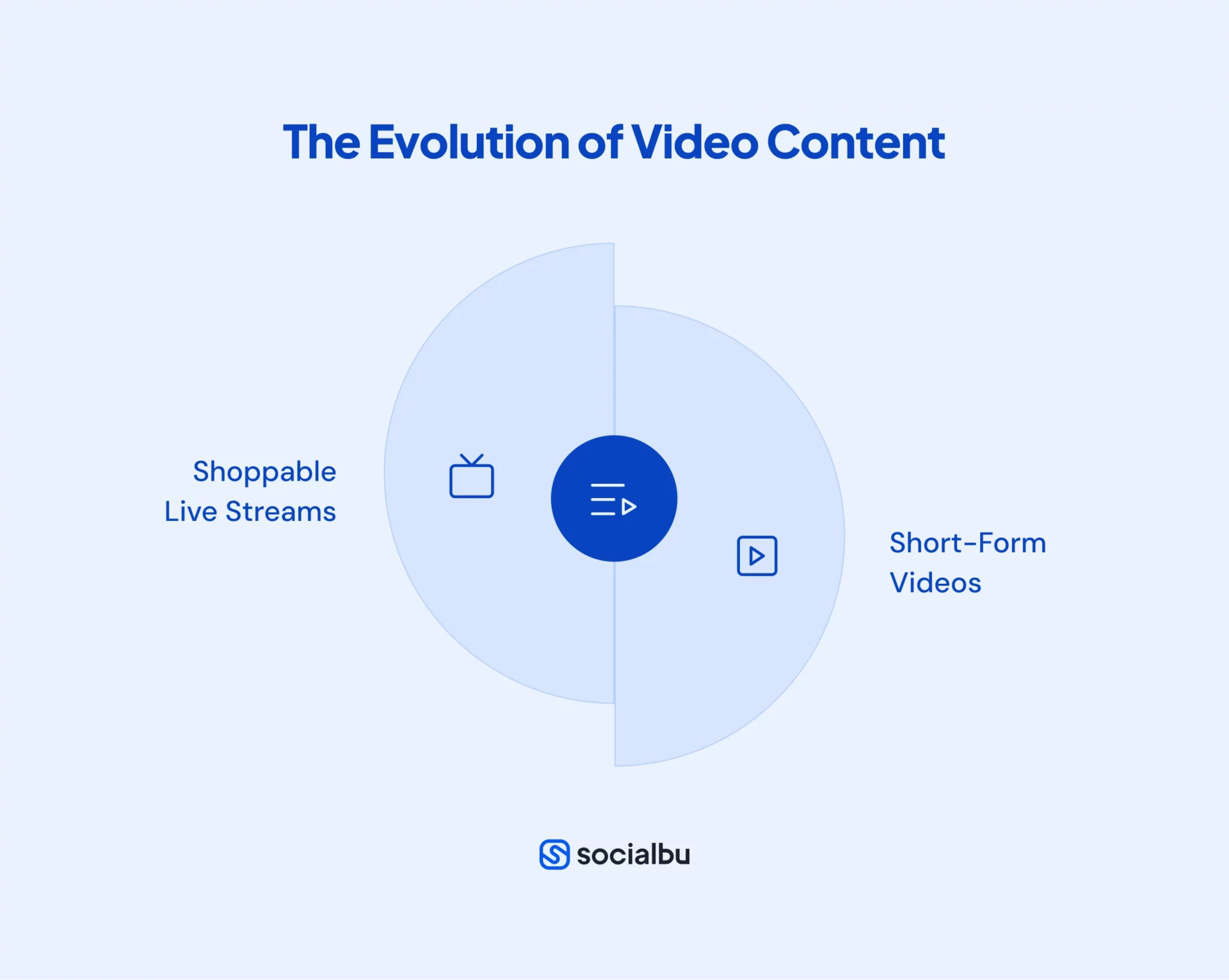
Short-form videos have become one of the most authoritative media on TikTok videos, Instagram Reels, and other platforms. Their short length, mixed content, and entertaining nature grab people’s attention quickly. Therefore, they are particularly suitable for delivering crisp brand messages.
Shoppable live streams are another significant content format that seamlessly integrates entertainment with e-commerce. They are a new way consumers can make purchases in real-time during live sessions. This makes shopping more exciting and engaging for the audience, increasing their chances of purchasing.
3. Use of User-Generated Content
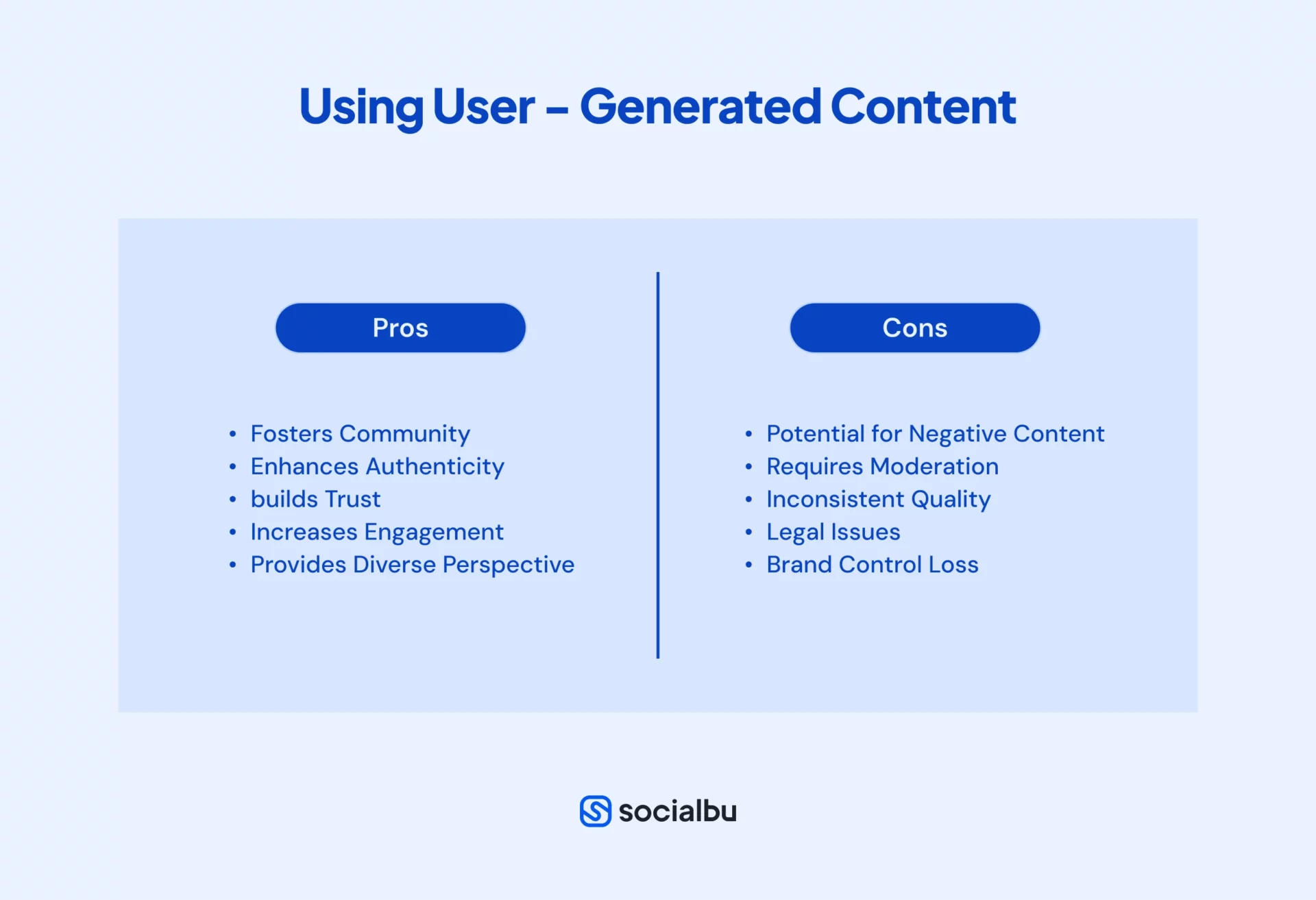
UGC encourages audience participation and creates a community-like environment, adding a sense of authenticity. User-generated content can help share real experiences with the audience through the brand, thus building trust.
Moreover, UGC also adds different perspectives to enrich the brand’s story and increase engagement. Adding UGC as part of your influencer marketing tactics can further enhance engagement.
4. The Power of Long-Form Content
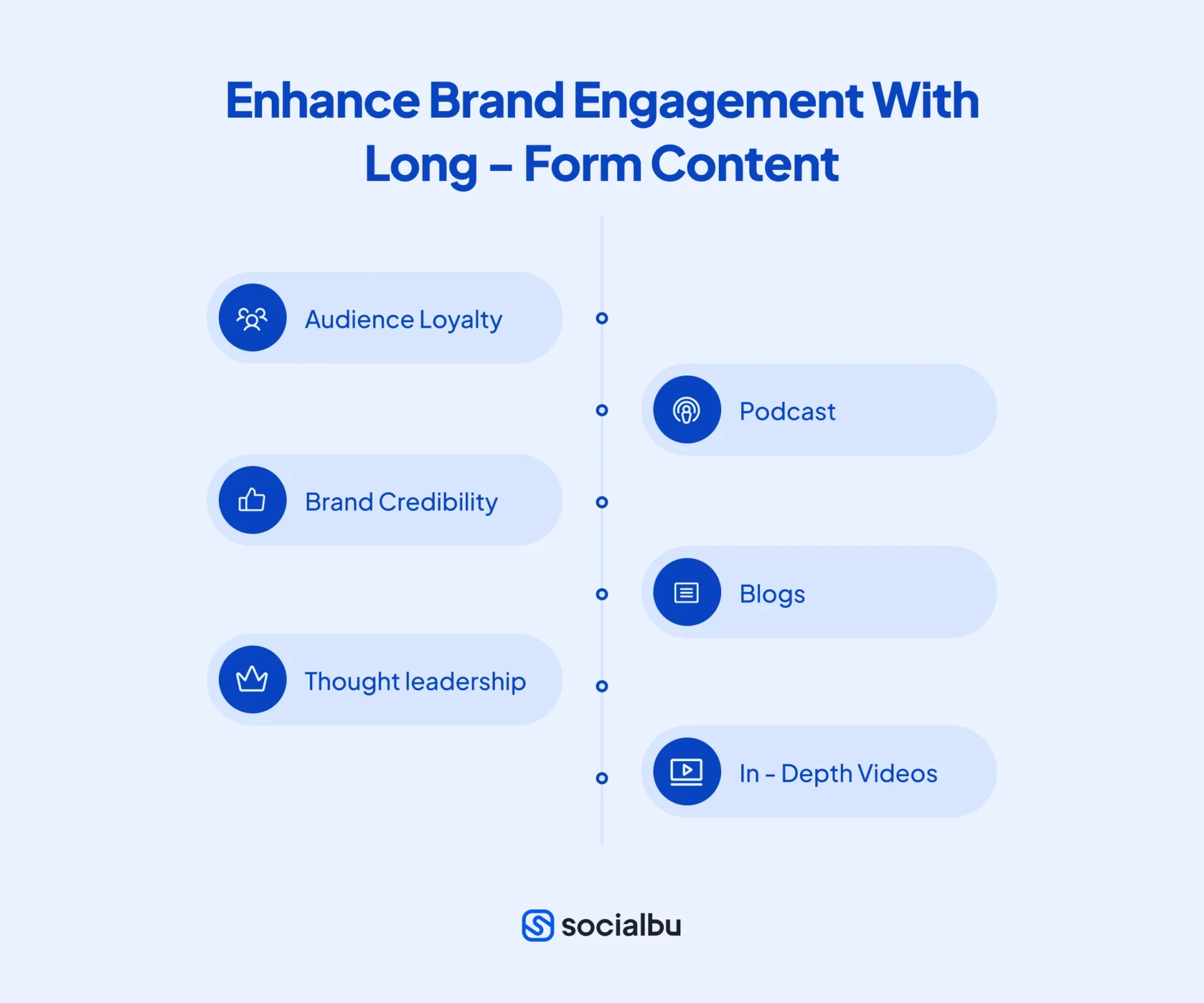
While short-form content offers immediate notice, long-form podcasts, blogs, and videos offer value in detailed information and storytelling. These formats allow your brand to explain things deeply, establish thought leadership, and build relationships with the audience.
Long-form content added to an influencer marketing plan is an excellent way to gain brand credibility and loyalty.
5. New Content Formats
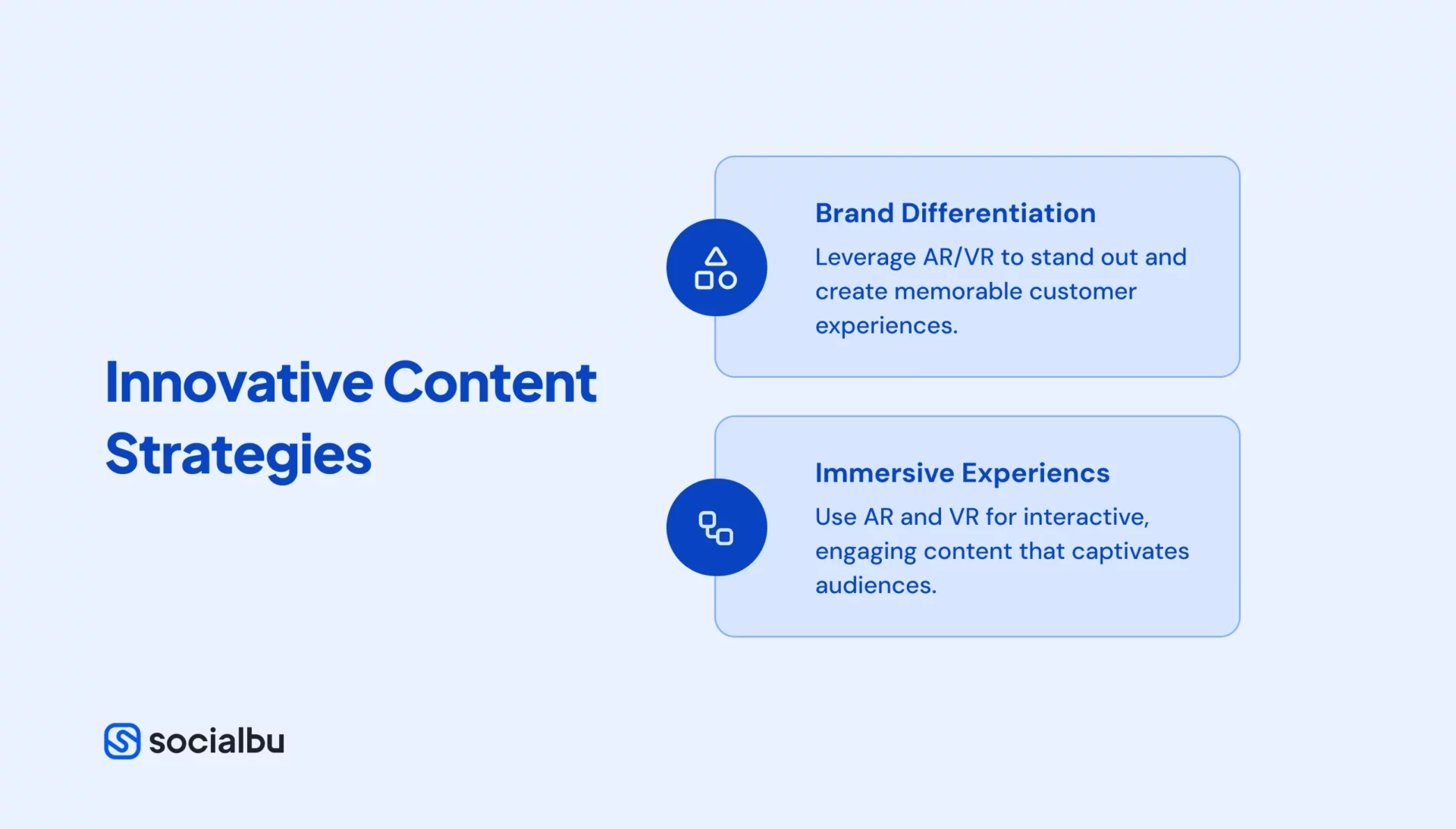
AR and VR are used in content strategies to create engaging and immersive experiences that captivate audiences. These technologies enable interactive and engaging content so consumers can experience products or services in a virtual environment.
Brands leveraging this technology have the power to establish a distinctive value proposition and build memorable experiences that their audience will ultimately appreciate.
6. Diverse Content Sources
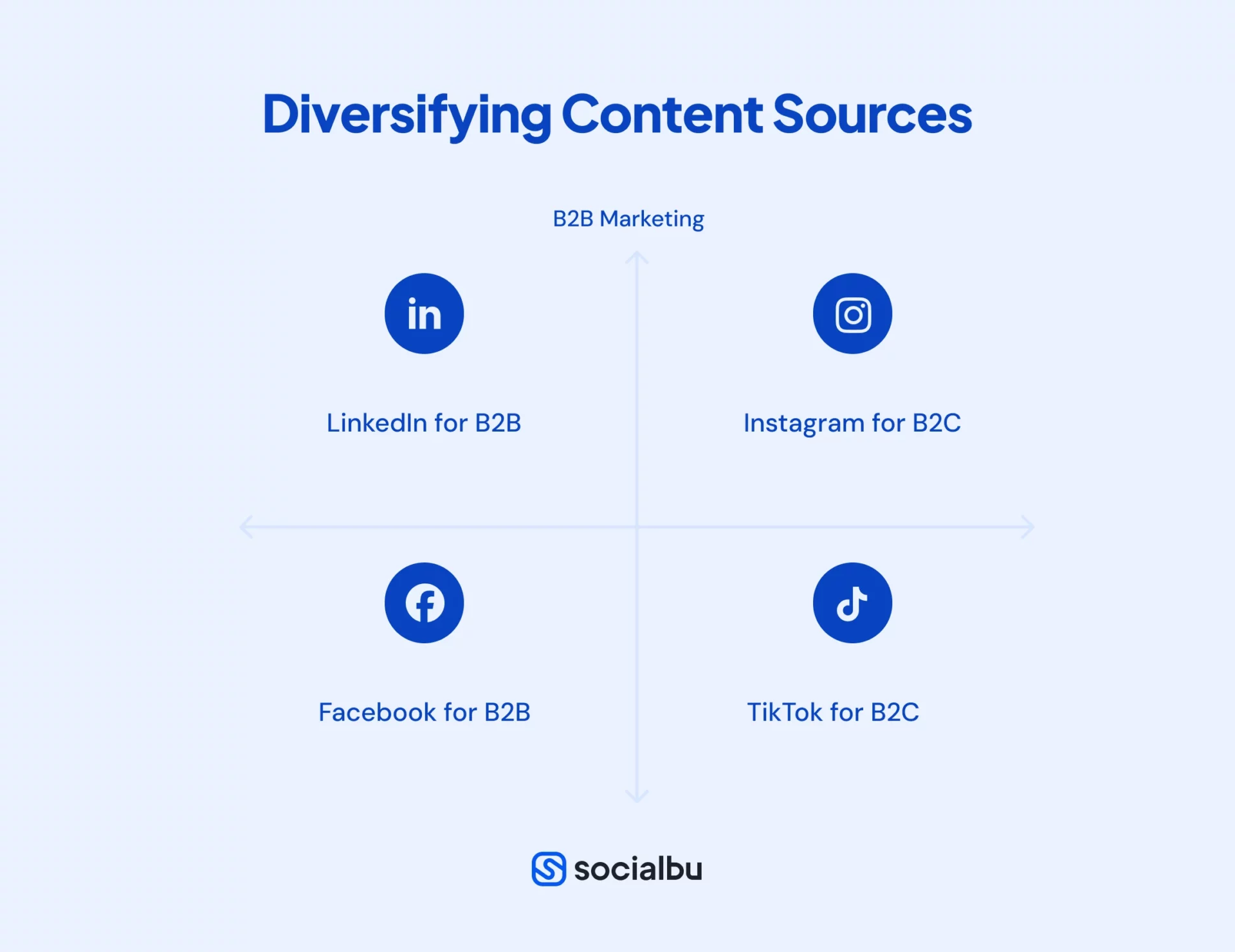
Collaborating with influencers on non-traditional platforms like LinkedIn for B2B marketing helps brands reach new audiences and expand their reach like never before. This approach allows brands to craft their content to particular demographics and industries for greater relevance and effectiveness.
By diversifying your content sources, your brand can adapt to the evolving digital landscape and stay competitive in influencer marketing channels.
Embracing these content strategies sets up a brand to have a comprehensive and powerful influencer marketing plan that aligns with its audience and drives success not just in 2025 but beyond.
Influencer Marketing – Next Level Strategies for the Year 2025
Influencer marketing strategies are expected to be integrated with advanced technologies, data analytics, and sustainability practices by 2025.
Brands that fail to adopt these advanced approaches will struggle to stay relevant or effectively connect with highly picky audiences.
1. Embrace Social Commerce
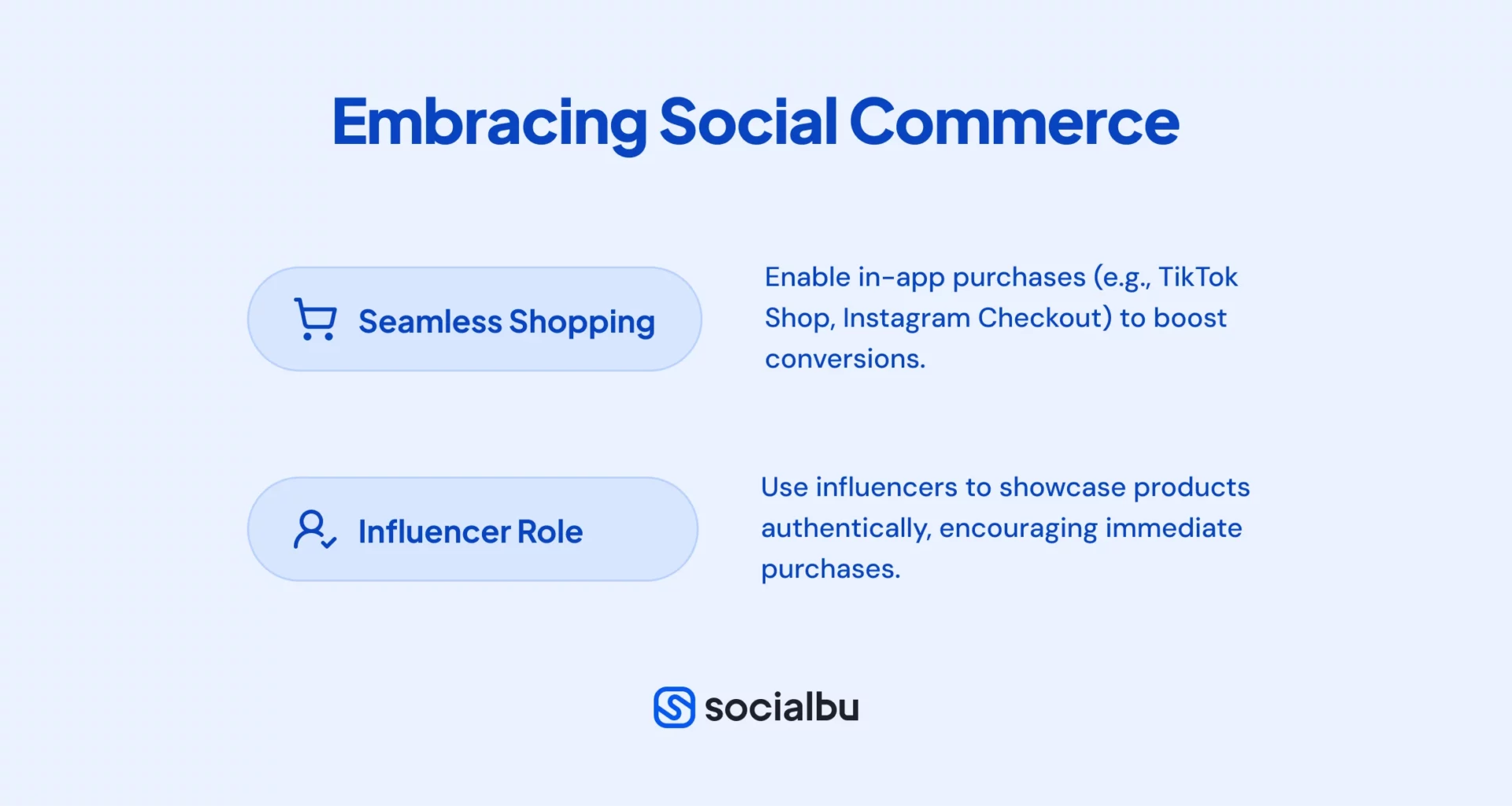
E-commerce and social media have created social commerce, which enables consumers to buy directly via TikTok shops, Instagram, and other platforms. Such seamless app integrations enhance the user experience by allowing consumers to make in-app purchases instead of visiting other websites.
For example, the Instagram checkout features make purchasing seamless and frictionless, with higher conversion rates. Another recent example of effective social commerce is AliExpress’s expansion of live-streaming services in the UK.
By introducing the ‘It Girls by AliExpress‘ Influencer Collective, led by TV presenter Olivia Attwood, the platform enables influencers to curate and promote products through live streams. This strategy allows consumers to view products in real-life scenarios, which promotes community engagement and increases consumer confidence in purchases.
That’s influencer marketing at its finest, combining engaging entertainment with ultimate convenience. However, brands must adjust their strategies to align with regional preferences and behaviors in different markets to ensure their messages stay relevant. Merchants focusing on AliExpress dropshipping can leverage these social commerce innovations to boost sales and engagement.
2. Data-Driven Decisions
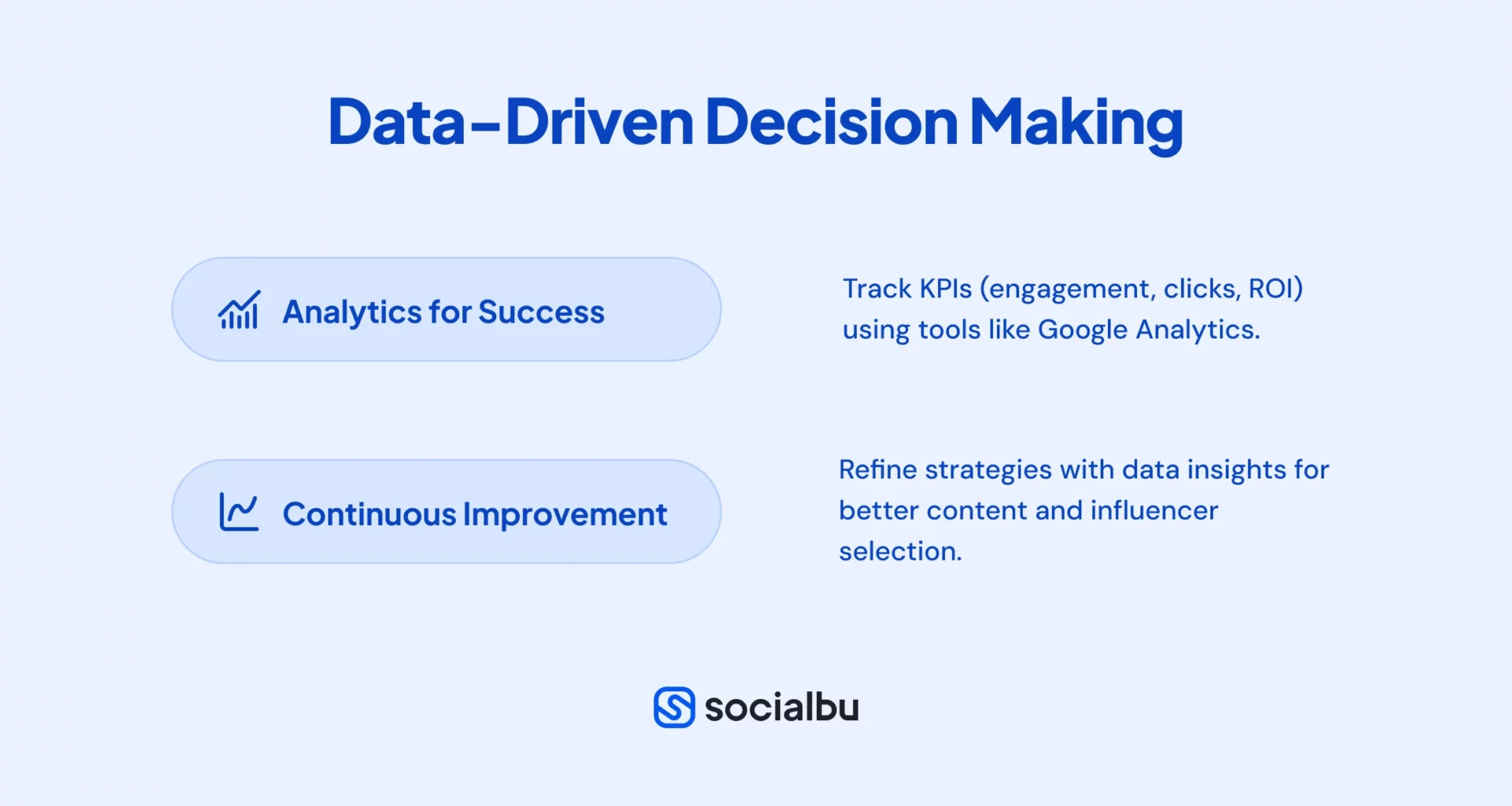
It is crucial to use analytics to measure the success of an influencer advertising campaign. Brands can use tools like Google Analytics, SocialBu, and platform-specific insights to monitor KPIs like engagement rates, click-through rates, and conversions. Ultimately, ROI explains past performance and guides strategies for future campaigns.
It allows brands to fine-tune their methods through continuous improvement via data analysis, refine their content, and choose appropriate influencers that aligns with their aims. This iterative process helps the campaigns to be effective and responsive to audience feedback.
3. Social Media Platforms Trends
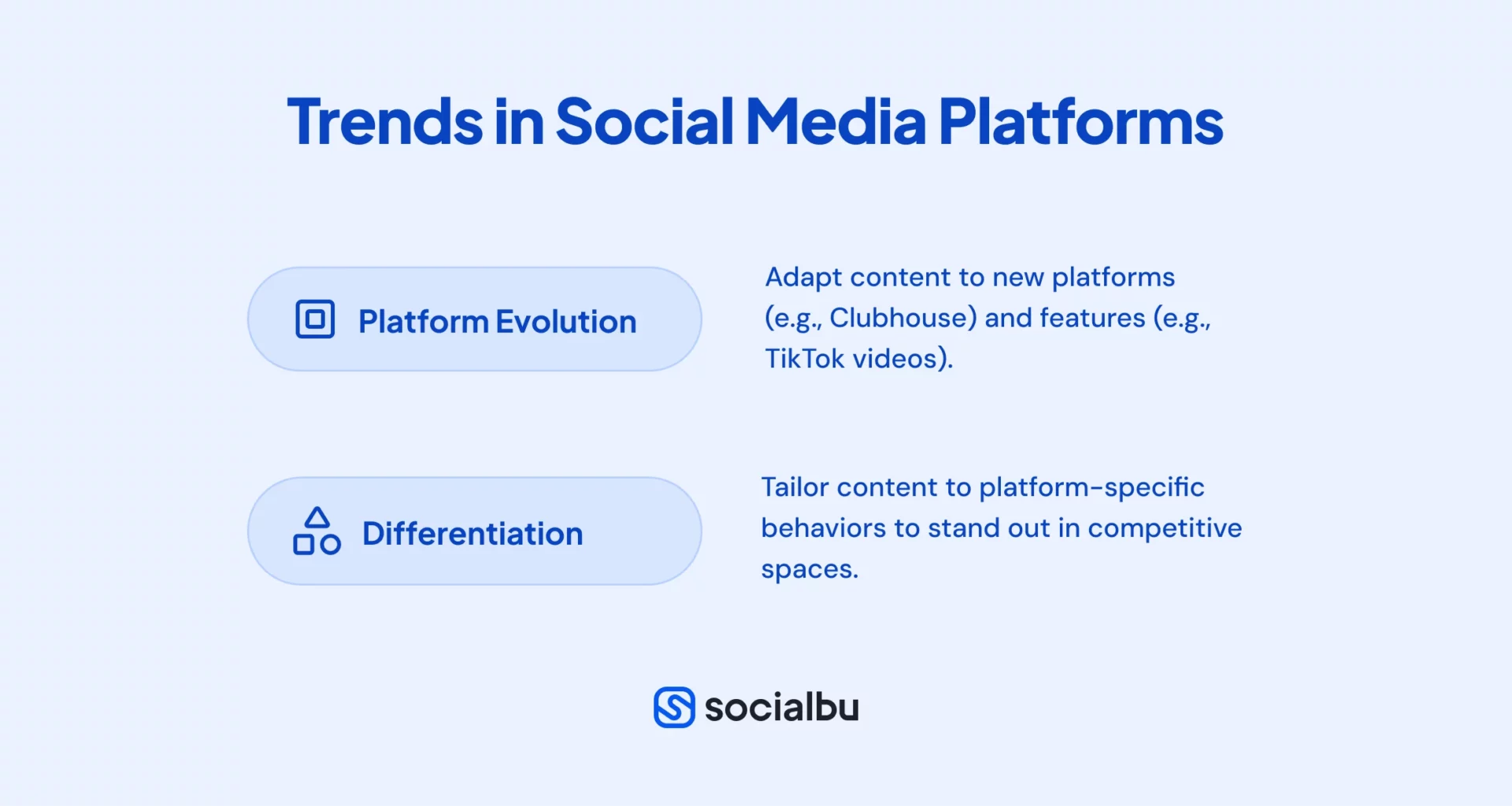
As new platforms emerge and norms change, the need to follow the new social media trends has increased. Apps like Clubhouse and popular video-sharing platforms are growing and offering new engagement opportunities. Each platform needs different kinds of content to match its audience and their preferences.
For example, TikTok is great for short videos, while YouTube works better for longer content. Established platforms like Facebook and Twitter are also improving by adding features like live audio rooms and better e-commerce tools. The main challenge for brands is to create content that effectively utilizes each platform’s unique features to stand out.
4. Implement AI-Driven Personalization
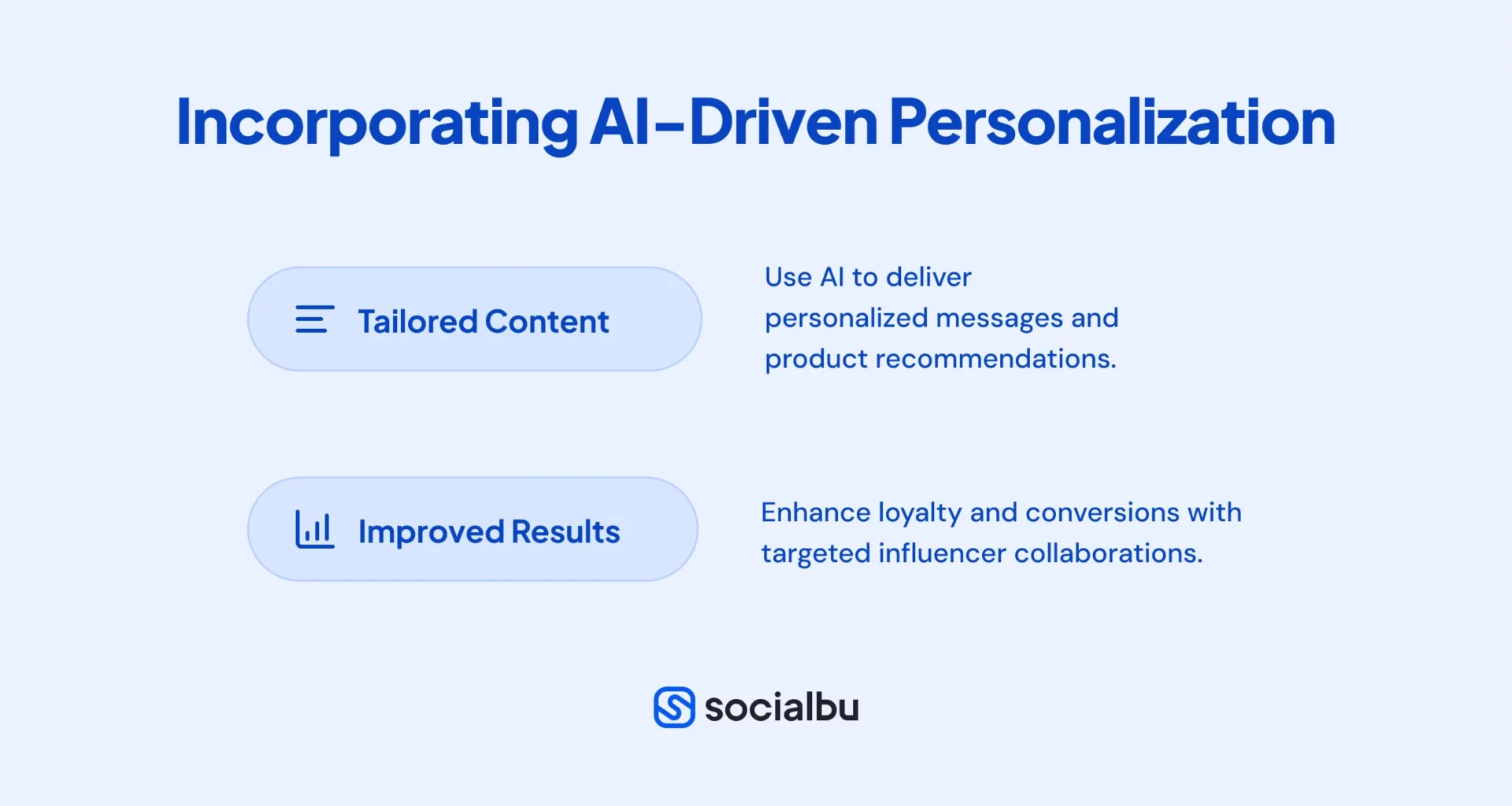
AI will let brands create personalized content and improve user experience and engagement. AI-powered tools analyze user data and provide personalized marketing messages, recommend products, and optimize content delivery times.
For example, AI can segment audiences based on behavior and allow highly targeted influencer collaborations that resonate with distinct consumer groups.
AI-driven personalization can amplify customer engagement exponentially by making the content more relevant and driving loyalty and conversions. Brands investing in AI technologies can make each influencer marketing strategy more efficient.
5. Sustainability in Influencer Marketing
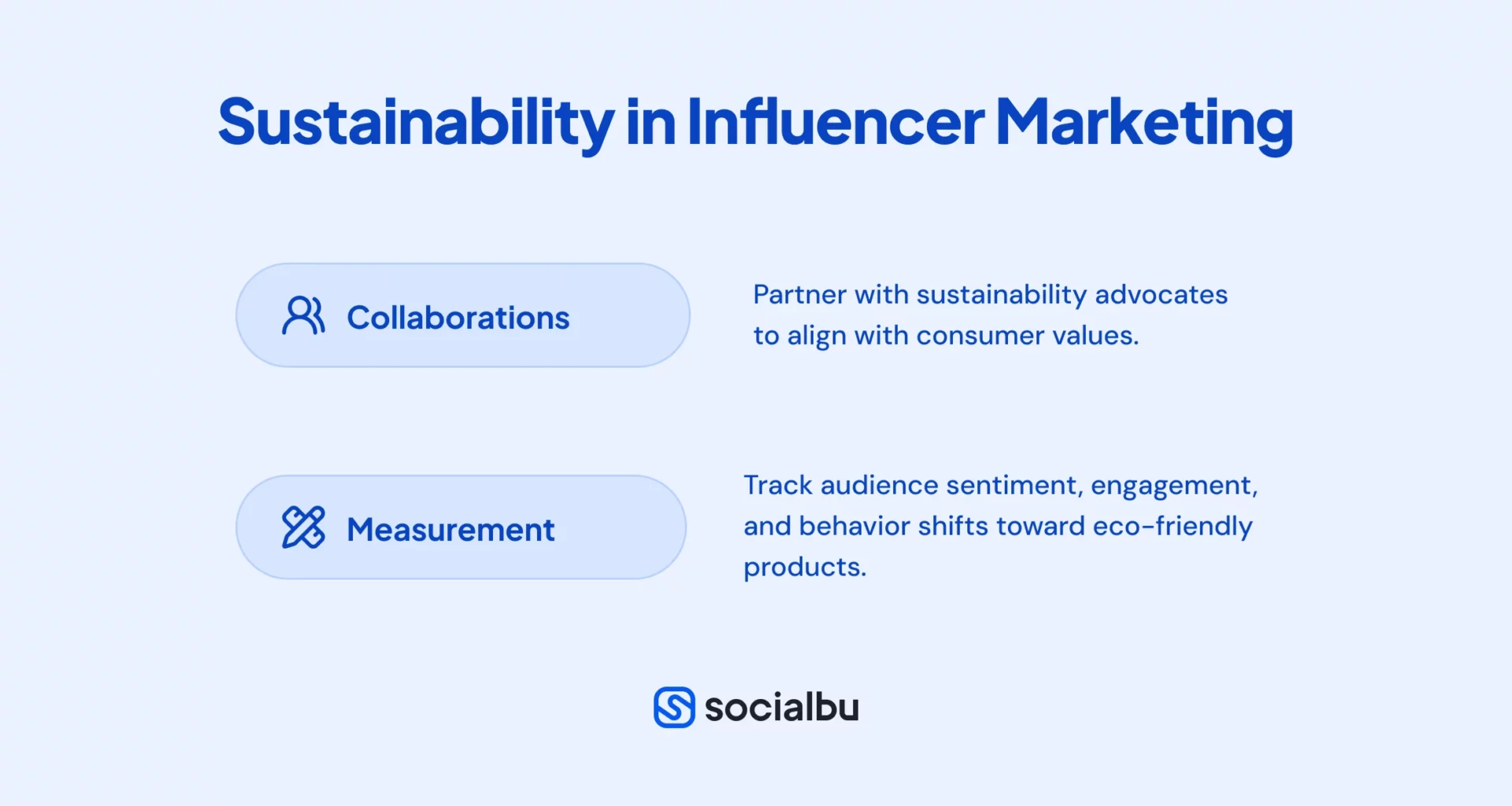
Consumers are increasingly becoming conscious of sustainability as an important factor in their purchasing decisions. So, brands have also started incorporating greener practices into their businesses.
Partnering with influencers who promote sustainability helps a brand better represent its values and commitment to taking care of the planet.
Measuring the impact of sustainability-focused campaigns involves tracking metrics such as audience sentiment, engagement rates, and the reach of eco-friendly messages.
Brands can also track the success of such campaigns by observing changes in consumer behaviors, such as growing interest in sustainable products. With sustainable behavior, brands elevate their influencer marketing strategies while building long-term trust.
The Role of Authenticity in Influencer Marketing
Authenticity is the foundation of successful influencer marketing strategies today. As consumers become more aware, they are drawn to genuine and transparent influencers who consider authenticity essential for building trust and strong relationships.
1. Importance of Transparency
Transparency helps maintain the integrity of influencer marketing. Obvious disclosure of collaboration meets legal requirements and helps the audience build trust.
According to the Influencer Marketing Hub, the majority of people believe authenticity in influencers matters, and 88% are likely to trust an influencer who openly discloses their partnerships.
To ensure transparency:
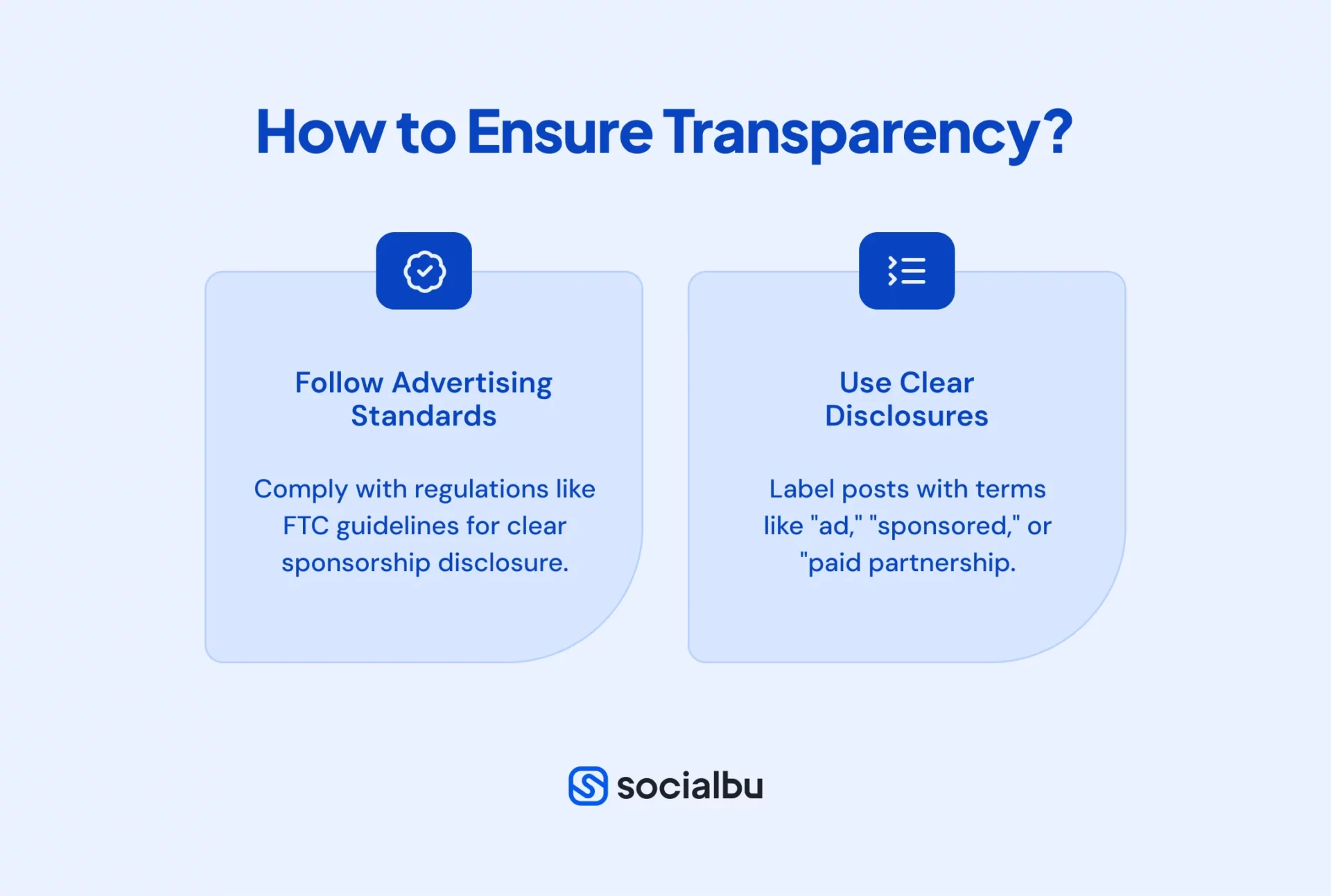
Adhere to Advertising Standards
Adhere to regulations by various regulatory bodies, such as the Federal Trade Commission in the United States, which requires clear disclosure of sponsored content.
Use Clear Disclosures
In the posts, disclose to the audiences by using clear language such as “Ad,” “Sponsored,” or “Paid Partnership.”
2. Build Trust with Audiences
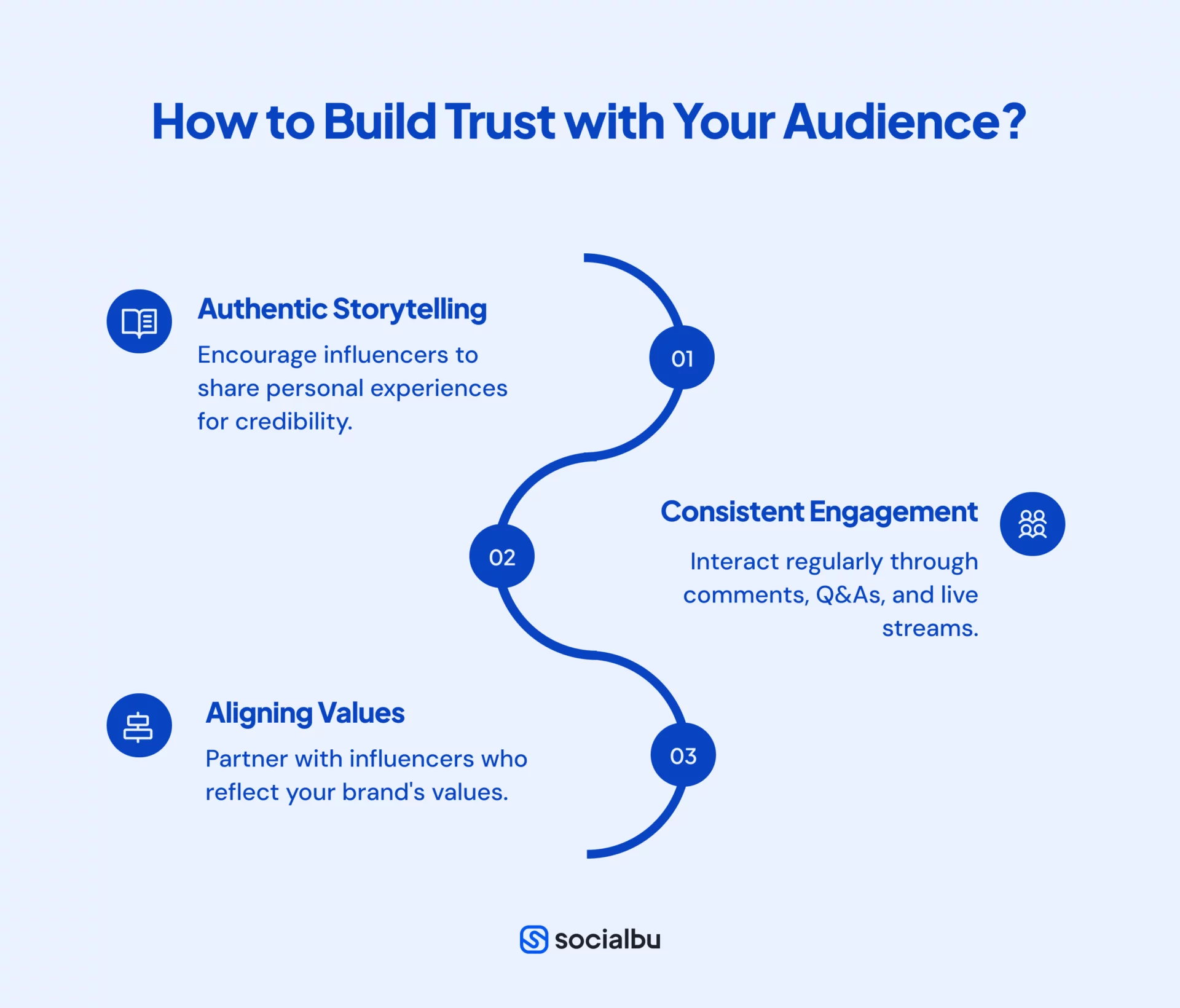
Establishing trust is crucial for any influencer marketing plan. Several strategies can be adopted to nurture genuine relationships.
Authentic Storytelling
This is where influencers can share their personal experiences or an honest opinion of the product or service, which makes the content more relatable and trustworthy.
Build a Loyal Community
Regular interaction with the audience through comments, Q&A sessions, and live streams to gain a loyal community.
Value Alignment
Partner with influencers whose values align with your brand personality to represent it authentically and build trust among your audience.
3. Address Ethical Concerns
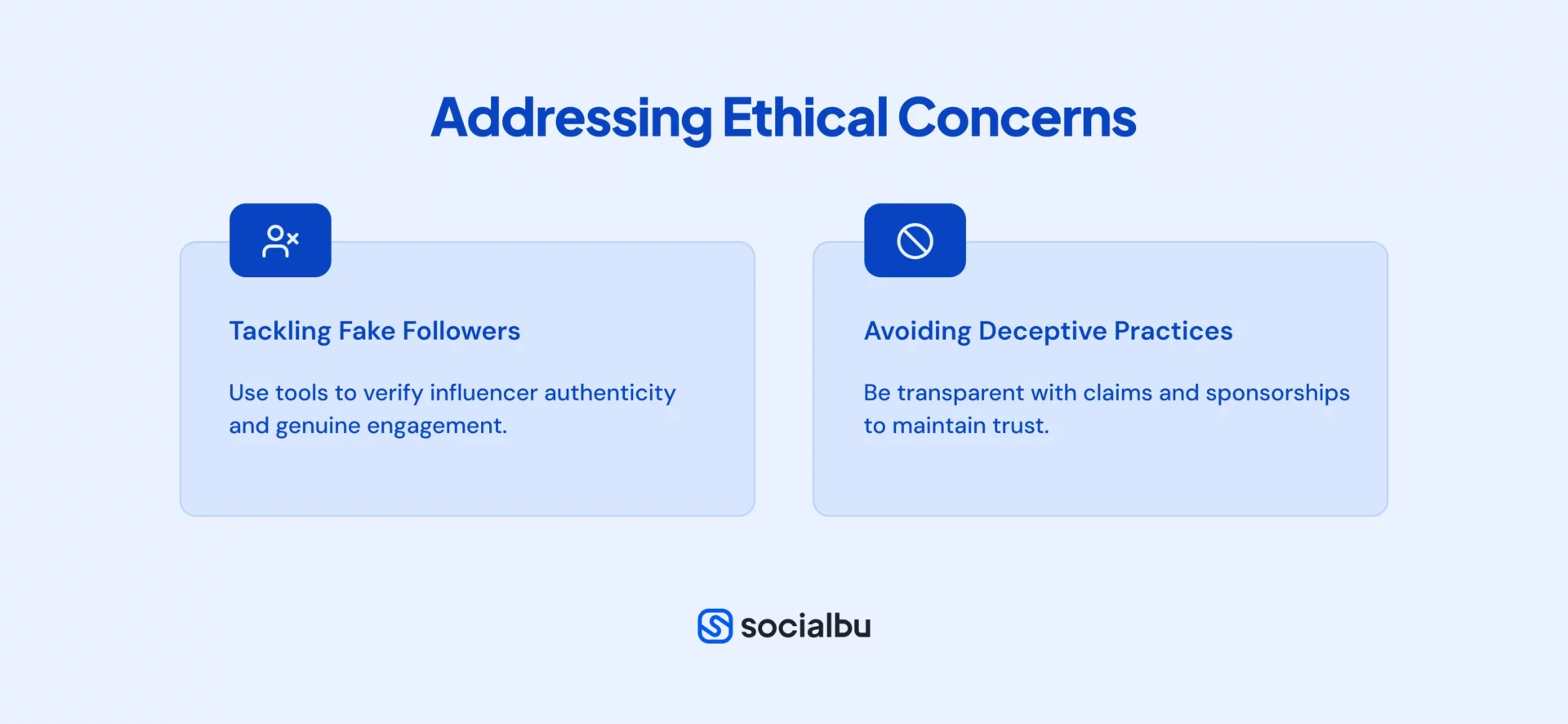
The foundation of any influencer marketing strategy should be ethical practices that bring credibility. Key considerations involve:
Combat Fake Followers
Use technology to audit influencer profiles for authenticity. This ensures that engagement metrics are organic and not boosted by bots.
Avoid Deceptive Practices
Refrain from knowingly making misleading claims or covering up sponsored content, as it may affect brand reputation by destroying consumer trust.
Prioritizing authenticity and transparency helps brands develop trust, cultivate better engagement with their audience, and lay the foundation for the long-term success of their influencer marketing strategies.
Tracking Influencer Marketing Campaigns
Effective monitoring and reporting can help understand and improve influencer marketing campaigns. Monitoring KPIs helps brands understand the return on investment (ROI) or even the level of audience engagement and tune their strategies to generate better results.
Importance of Campaign Performance Tracking
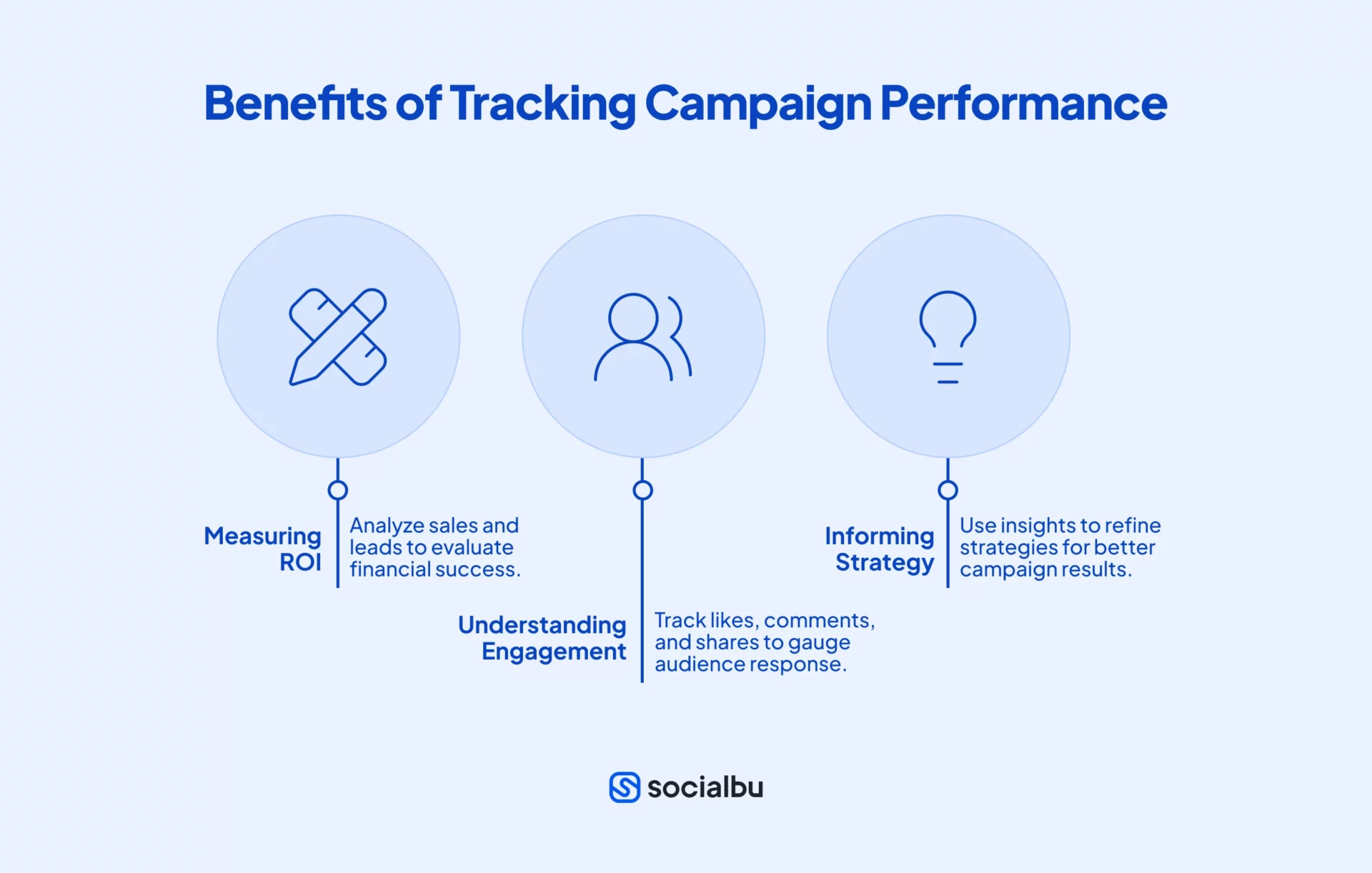
Monitoring campaign performance is quite important for several reasons:
Measuring the ROI
Sales conversion and lead generation metrics allow brands to determine just how effective a financial collaboration with influencers will be.
Understanding Engagement
Through tracking likes, comments, shares, and other forms of engagement metrics, proper assessments can be achieved on how well the content resonates with the target audience.
Data-Driven Strategy
Applying data-driven insights, brands can make real-time changes to their strategy to create effective campaigns now and in the future.
Key Metrics to Track
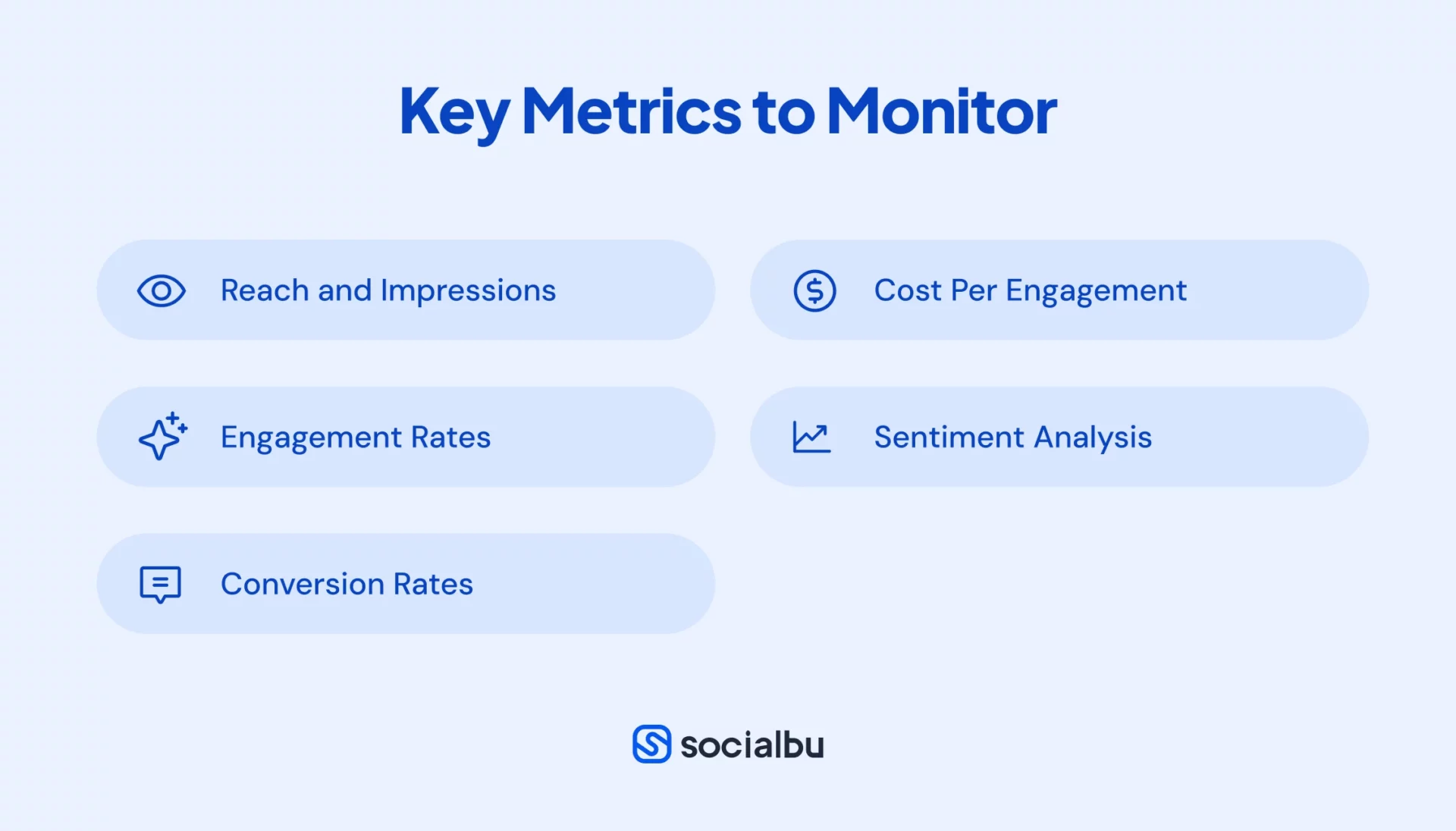
Consider the following KPIs to assess campaign performance from every angle:
Reach and Impressions
The number of unique users by whom a certain content has been viewed and the sum of the times it was viewed.
Engagement Rates
Monitor the number of likes, comments, shares, and saves reflective of audience engagement.
Conversion Rates
This measures the percentage of users who take a desired action, like making a purchase or signing up for a newsletter, after engaging with the content.
Cost Per Engagement (CPE)
Calculate the cost for each engagement to assess the campaign’s efficiency.
Sentiment Analysis
The tones and sentiments of the audience’s answers will help you understand the public perceptions.
Campaign Management and Analytics Tools
Effective campaign management and analytics require the use of strong tools. Regarding influencer marketing campaigns, SocialBu is a completely featured solution.
Campaign Planning and Scheduling
Plan and schedule various posts on different platforms for consistency and maximum reach.
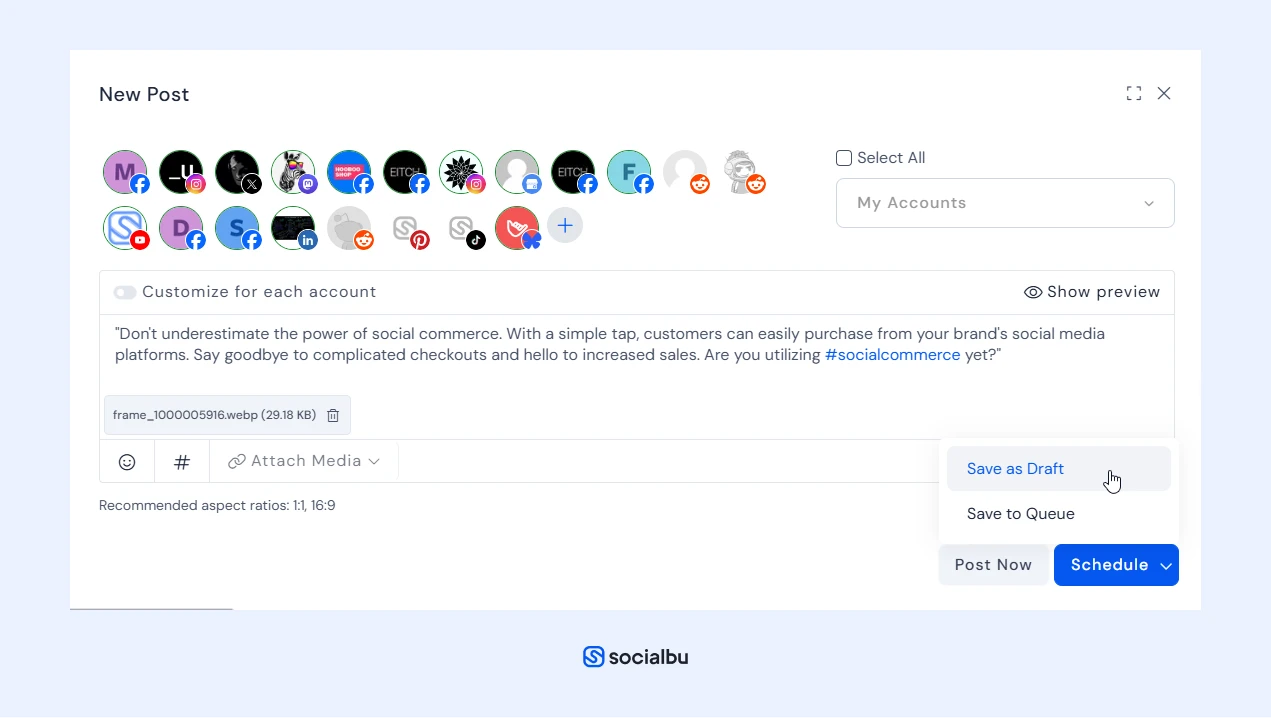
Performance Tracking in Real Time
Assure the tracking of each campaign on all metrics for any immediate adjustments and optimization.

Automate Repetitive Tasks
Assistance in streamlining workflows by automating routine tasks to get more time for strategic planning and creative development.

Advanced Analytics
Take a closer look at campaign performance with clear reports and visual data to help make better decisions.
Best Practices for Campaign Optimization
Here are some key practices to consider in maximizing the effectiveness of influencer marketing campaigns:
- Regularly reviewing performance metrics helps identify which aspects of your business operations, such as sales, marketing, customer service, or product development, are performing well and which may require improvement.
- Utilize real-time information to adjust strategies that are concerned with campaign objectives better.
- Collaborate with influencers to get insights and feedback to help continuously improve.
Additional Considerations in Influencer Marketing
As influencer marketing continues to evolve, brands need to address several key areas to ensure ethical practices, minimize risks, and create inclusive partnerships.
1. Diversity and Inclusion
With more perspectives in influencer marketing partnerships, authenticity in the connections is ensured. Partnering with influencers from different backgrounds will greatly help with inclusion and speak to a much larger audience.
For example, collaborations that highlight cultural diversity or support social causes meet today’s consumer expectations and strengthen influencer marketing strategies.
These comprehensive agreements protect both parties and create a foundation for a successful collaboration, which elevates the overall experience with influencer marketing.
2. Regulatory Compliance
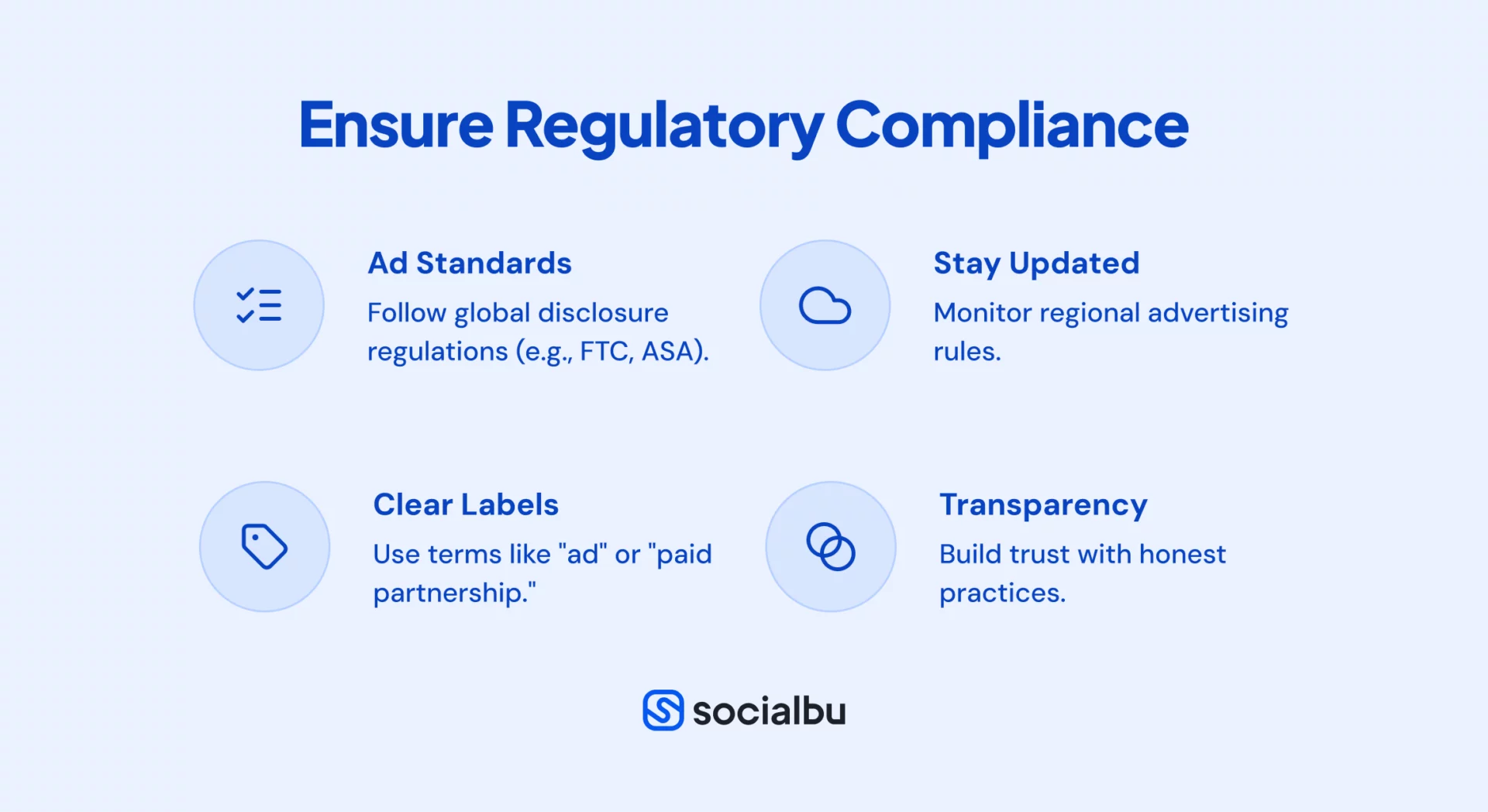
Influencer advertising remains one of the most essential areas, and adherence to advertising standards and disclosure regulations is important. Because of that, various regulatory bodies around the world, including the US Federal Trade Commission and the UK Advertising Standards Authority, all call for transparent disclosures of sponsored content to maintain transparency and protect consumers. Non-compliance invites lawsuits against organizations and hampers brand reputation.
To ensure compliance:
- Collaborate with influencers to ensure that sponsored posts are clearly labeled as “ad” or “paid partnership.”
- Keep updated on regional advertising regulations so misunderstandings may be avoided.
Transparent practices ensure trustworthiness, aligning with influencer marketing best practices.
3. Crisis Management
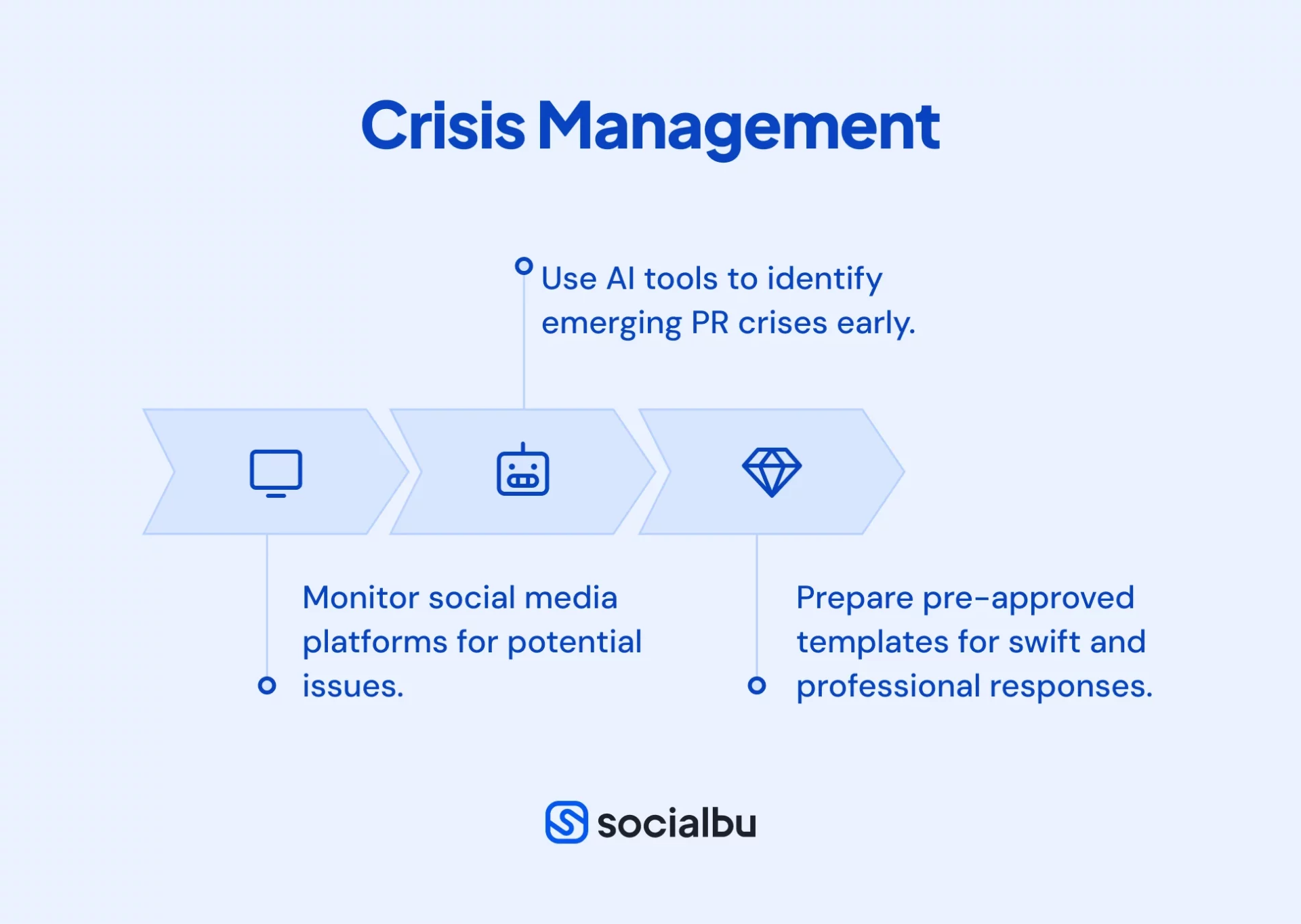
Effective management of controversies or negative feedback is one of the most important ways to sustain brand integrity. Formulate a plan for crisis management, including:
- Monitoring social media platforms against any issues that may arise.
- Use AI-powered tools for sentiment analysis to identify emerging PR crises.
- Prepare in advance a set of pre-approved response templates to tackle negative responses quickly and professionally.
Businesses can convert any crisis into an opportunity by being quite proactive and responsive in showing transparency and accountability.
4. Contract and Agreements
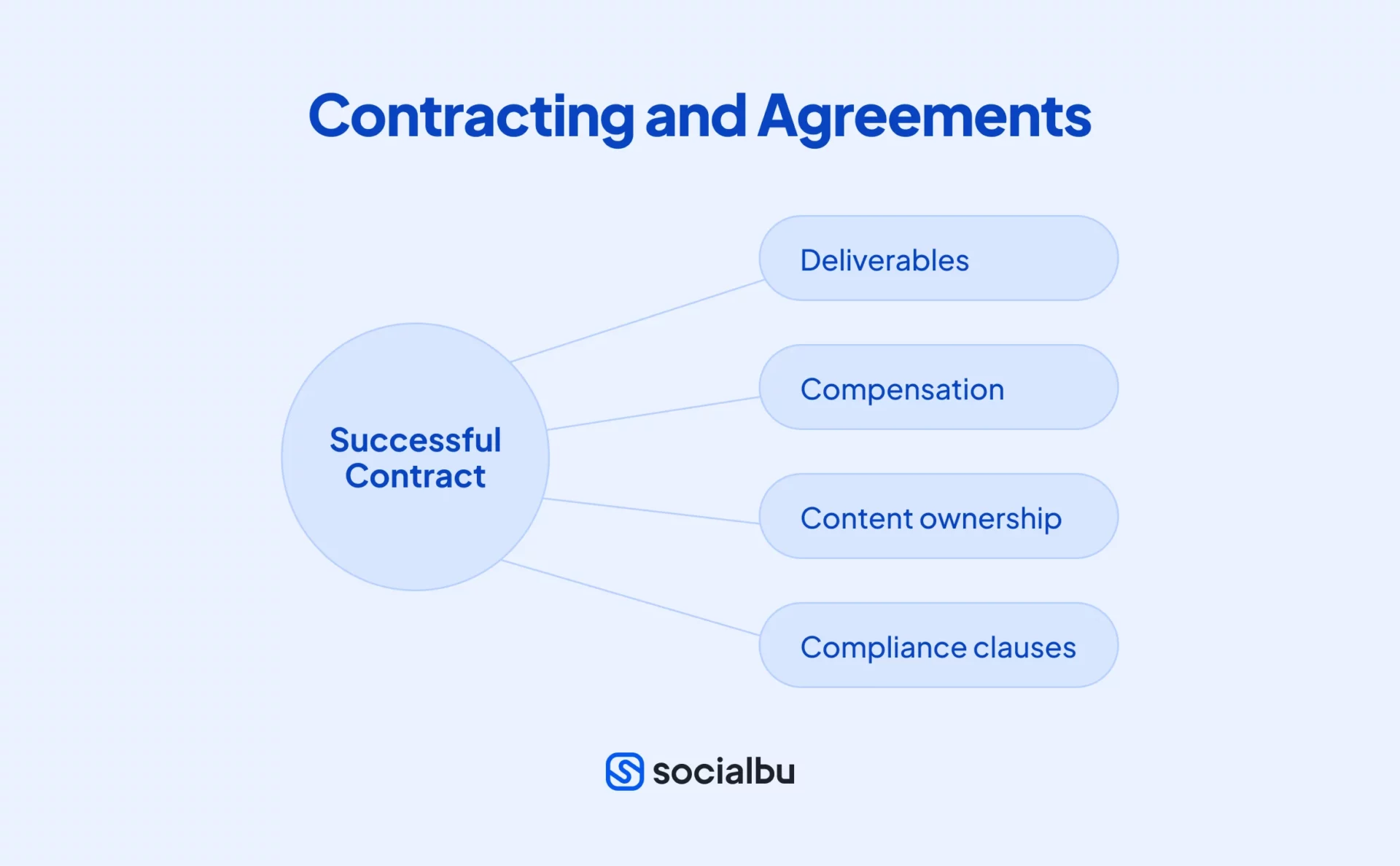
Clear, understandable contracts outlining the details will help avoid disputes and ensure that both signings’ understanding is mutual. The contract should contain the following:
- Deliverables: Describe the type, number, and quality of content.
- Compensation: Outline payment details, including rates and timelines.
- Ownership of Content: Clearly define who retains rights over the content once it has been published.
- Compliance Clauses: Add rules to ensure the campaign follows advertising laws.
Final Words
Influencer marketing in 2025 will continue to give brands new ways to reach their audience, even with the ongoing challenges.
To make a big impact, the brand has to be more real, quick, and focused on trust and transparency. Keeping up with social commerce, personalization from AI, and sustainability keeps branded content in line with consumer demand.
SocialBu makes this easier with tools to plan, track, and improve your influencer campaigns, helping you stay creative and ahead of the game. The world of influencer marketing is always changing, so start today with SocialBu and get the most out of your influencer partnerships.
FAQs
How does influencer marketing work?
Influencer marketing involves having influencers promote a brand or product to their followers through authentic content. This helps brands connect with their audience and drive engagement.
Why is influencer marketing important?
It’s important because it builds trust, reaches targeted audiences, and drives better engagement and conversions compared to traditional advertising.
What are the elements of relevance in influencer marketing?
These elements include audience fit, niche expertise, engagement quality, and content alignment with brand values. These factors ensure campaigns resonate authentically and effectively with the target audience.




